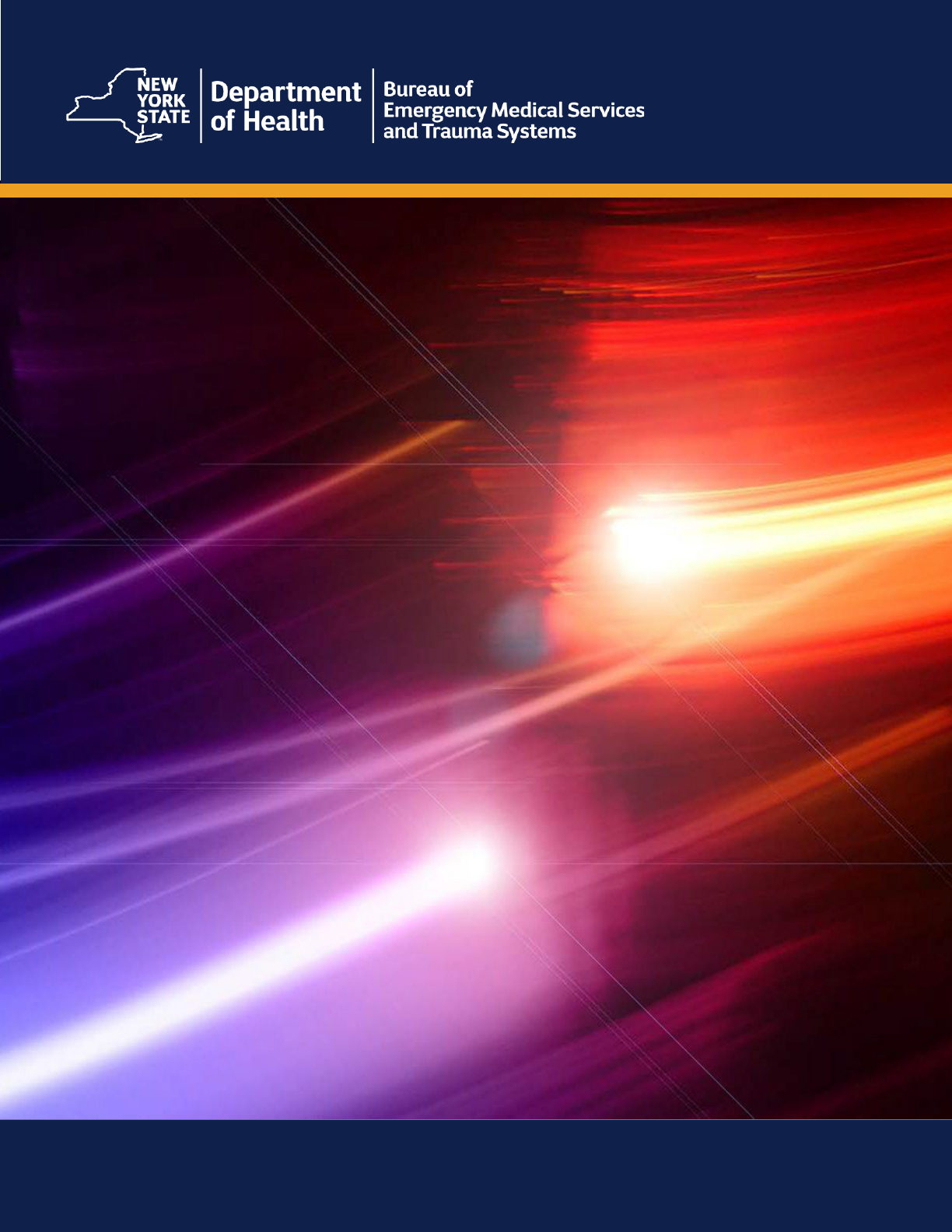
Statewide
Basic Life Support
Adult and Pediatric
Treatment Protocols
Version 22.0
Effective 02-25-2022
health.ny.gov/ems
1
Version 22.0 Effective 02-25-2022
Index
Background .......................................................................................................................... 4
Introduction .......................................................................................................................... 5
Pediatric Definition and Discussion .................................................................................... 7
Acknowledgements ............................................................................................................ 8
General Approach to Prehospital Care .............................................................................. 9
General Approach to the EMS Call .................................................................................. 10
General Approach to the Patient ...................................................................................... 11
General Approach to Transportation ................................................................................ 14
General Approach to Safety Restraining Devices ............................................................ 15
Extremis/Cardiac Arrest Protocols................................................................................... 16
Cardiac Arrest .................................................................................................................. 17
Cardiac Arrest – Pediatric ................................................................................................ 19
Foreign Body Obstructed Airway ...................................................................................... 21
Foreign Body Obstructed Airway – Pediatric.................................................................... 22
Respiratory Arrest/Failure ................................................................................................ 23
Respiratory Arrest/Failure – Pediatric .............................................................................. 24
Obvious Death.................................................................................................................. 25
General Adult and Pediatric Medical Protocols .............................................................. 26
AMS: Altered Mental Status ............................................................................................. 27
AMS: ALTE/BRUE – P
ediatric.......................................................................................... 28
Anaphylaxis ...................................................................................................................... 29
Anaphylaxis – Pediatric .................................................................................................... 30
Behavioral Emergencies .................................................................................................. 32
Carbon Monoxide Exposure – Suspected...................................................................... 333
Cardiac Related Problem ................................................................................................. 35
Cardiac Related Problem – Pediatric ............................................................................... 36
Childbirth: Obstetrics ........................................................................................................ 38
Childbirth: Newborn/Neonatal Care.................................................................................. 40
Difficulty Breathing: Asthma/Wheezing ............................................................................ 41
Difficulty Breathing: Asthma/Wheezing – Pediatric .......................................................... 43
Difficulty Breathing: Stridor – Pediatric ............................................................................. 45
Environmental – Cold Emergencies ................................................................................. 46
Environmental – Heat Emergencies ................................................................................. 48
Opioid (Narcotic) Overdose .............................................................................................. 49
2
Version 22.0 Effective 02-25-2022
Poisoning.......................................................................................................................... 50
Seizures ........................................................................................................................... 51
Sepsis/Septic Shock......................................................................................................... 52
Sepsis/Septic Shock – Pediatric....................................................................................... 53
Stroke ............................................................................................................................... 54
Technology Assisted Children .......................................................................................... 55
Total Artificial Heart (TAH) ............................................................................................... 57
Ventricular Assist Device (VAD) ....................................................................................... 58
Trauma Protocols............................................................................................................... 60
Trauma Patient Destination .............................................................................................. 61
Amputation ....................................................................................................................... 62
Avulsed Tooth .................................................................................................................. 63
Bleeding/Hemorrhage Control .......................................................................................... 64
Burns ................................................................................................................................ 66
Chest Trauma................................................................................................................... 68
Eye Injuries....................................................................................................................... 69
Musculoskeletal Trauma .................................................................................................. 70
Patella Dislocation ............................................................................................................ 71
Suspected Spinal Injuries ................................................................................................. 72
Resources........................................................................................................................... 74
Advance Directives/DNR/MOLST .................................................................................... 75
APGAR ............................................................................................................................. 77
A
utomatic Transport Ventilator ......................................................................................... 78
Child Abuse Reporting ..................................................................................................... 80
Glasgow Coma Score (GCS) ........................................................................................... 81
Incident Command ........................................................................................................... 82
Needlestick/Infectious Exposure ...................................................................................... 83
Normal Vital Signs for Infants/Children............................................................................. 84
Oxygen Administration ..................................................................................................... 85
Pediatric Assessment Triangle ......................................................................................... 86
Prescribed Medication Assistance ................................................................................... 87
Refusal of Medical Attention............................................................................................. 88
Responsibilities of Patient Care ....................................................................................... 90
Transfer of Patient Care ................................................................................................... 91
3
Version 22.0 Effective 02-25-2022
4
Version 22.0 Effective 02-25-2022
Background
These protocols are intended to guide and direct patient care by EMS providers across New
York State. They reflect the current evidence-based practice and consensus of content
experts. These protocols are not intended to be absolute treatment documents, rather, as
principles and directives which are sufficiently flexible to accommodate the complexity of
patient management.
No protocol can be written to cover every situation that a provider may encounter, nor are
protocols a substitute for good judgment and experience. Providers are expected to utilize
their best clinical judgment and deliver care and procedures according to what is
reasonable and prudent for specific situations. However, it will be expected that any
deviations from protocol shall be documented and reviewed, according to regional
procedure.
THESE PROTOCOLS ARE NOT A SUBSTITUTE
FOR GOOD CLINICAL JUDGEMENT

5
Version 22.0 Effective 02-25-2022
Introduction
The Statewide Basic Life Support Adult and Pediatric Treatment Protocols reflect the
current acceptable standards for basic life support (BLS) delivered by certified first
responders (CFR), and emergency medical technicians (EMT) in New York State.
Advanced life support (ALS) protocols are developed separately and subject to regional
variation.
Advanced providers are also responsible for, and may implement, the standing orders
indicated for BLS care. Protocols are listed for each provider level and STOP lines indicate
the end of standing orders. Generally, BLS interventions should be completed before ALS
interventions.
Bullets are used throughout this document. Many processes are not sequential and tasks
should be performed as most appropriate for patient care.
Regional protocols and policies may accompany these BLS protocols.
The color-coded format of the protocols allows each BLS professional to easily follow the
potential interventions that could be performed by level of certification.
CRITERIA
• Any specific information regarding the protocol in general
CFR AND ALL PROVIDER LEVELS
• CFR and EMT standing orders
• These are also standing orders for all levels of credential above EMT
CFR STOP
EMT
• EMT standing orders
• These are also standing orders for all levels of credential above EMT
EMT STOP
MEDICAL CONTROL CONSIDERATIONS
• Options listed in this section are common considerations that medical control may
choose to order as the situation warrants
KEY POINTS/CONSIDERATIONS
• These protocols do not supplant regionally required equipment specifications or the
items required under Public Health Law and Regulations
6
Version 22.0 Effective 02-25-2022
• These protocols should not serve as a demonstration of required equipment or
training, as regional and agency variations will exist
• “*if equipped and trained” is noted to indicate interventions that may be performed if an
agency or region chooses to implement these variations. These are not required.
7
Version 22.0 Effective 02-25-2022
Pediatric Definition and Discussion
The period of human development from childhood to adulthood is a continuum with the
transition occurring during puberty. Since the completion of this transition is not sharply
demarcated and varies among individuals, it is difficult to set a precise age when childhood
ends and adulthood begins. It follows that use of such a definition to determine when a
pediatric or an adult protocol is to be used is also problematic.
The medical control agreement contained within these protocol document states, “providers
are expected to utilize their best clinical judgment and deliver care and procedures
according to what is reasonable and prudent for specific situations.” The determination of
when to utilize an adult or pediatric protocol shall be no different and subject to the same
CQI review that is compulsory with any other aspect of prehospital emergency care.
As a general guideline for use with these protocols, the following definition has been
established:
• Pediatric protocols should be considered for patients who have not yet reached
their 15th birthday
8
Version 22.0 Effective 02-25-2022
Acknowledgements
The State and Regional Emergency Medical Services Councils, State and Regional
Emergency Medical Advisory Committees, State Emergency Medical Services for Children
Advisory Committee, Regional Program Agency staff, and all who contributed to this and
previous versions of these protocols.
The BLS Protocols Advisory and Writing Group.
NYSDOH Bureau of EMS staff.
Special thanks to Robin Snyder-Dailey for the protocol design.
9
Version 22.0 Effective 02-25-2022
General Approach to Prehospital Care

10
Version 22.0 Effective 02-25-2022
General Approach to the EMS Call
Applies to adult and pediatric patients
CRITERIA
This general approach guidance document is intended to provide a standardized framework
for approaching the scene. Follow common sense, apply good clinical judgment, and follow
regionally approved polices and protocols.
Consider dispatch information while responding:
• Type of response
(emergency/non)
• Prevailing weather
• Road conditions
• Time of day
• Location of call
• EMD determinant/mechanism
of illness/injury
• Number of anticipated patients
• Need for additional resources
Survey the scene – do not approach the scene unless acceptably safe to do so. Stage
proximate to the scene until scene is rendered acceptably safe:
• Environmental hazards
• CBRNE hazards
• Evidence of unknown
powders/other
unknown substances/sharps
• Indicators of a chemical suicide
• Mechanical hazards
• Violence/threat of violence
• Traffic hazards
• Number of actual patients
• Activate local MCI plan as
necessary
Consider shelter-in-place or evacuation based on hazards; consider additional support
resources:
• ALS intercept
• Additional ambulance
• Air medical services
• EMS physician
• Fire department/heavy rescue
• Law enforcement
• Utilities
Ensure universal precautions/personal protective equipment appropriate to the task.
For situations in which EMS PPE would not sufficiently protect the provider, the
pr
ovider should assist the other emergency responders in determining response
objectives based on life safety, property preservation, and environmental protection.
Establish or participate in unified command or ICS structure, as appropriate.
For MCIs, establish a command structure as soon as possible.
EMT
CFR AND ALL PROVIDER LEVELS

11
Version 22.0 Effective 02-25-2022
General Approach to the Patient
Applies to adult and pediatric patients
CRITERIA
This general approach guidance document is intended to provide a standardized framework
for approaching the patient. Follow common sense, apply good clinical judgment, and follow
regionally approved polices and protocols.
History of present illness
• What events led up to the EMS contact?
• Use SAMPLE, OPQRST or similar to guide approach to events/illness/complaint
• Pertinent past medical history/medications/allergies
• Obtain additional pertinent medical information from the family and bystanders
Physical exam
• Focused or complete exam directed by patient presentation, chief complaint, and
mechanism of injury or illness
• Check for medical alert tags
Patient examination – primary
Identify and treat apparent life-threats including massive hemorrhage
Airway
• Identify and correct any existing or potential airway obstruction while protecting the
cervical spine if appropriate
• Is the airway patent?
• Will it stay open on its own?
• Is intervention (OPA, NPA, suction) necessary?
Breathing
• Apply oxygen and/or positive pressure ventilations, as indicated
• See “Resources: Oxygen Administration” protocol
• Is breathing present?
• Is breathing too fast or too slow to sustain life?
• Is the patient speaking effectively?
Circulation
• Control serious life-threatening hemorrhage immediately upon discovery
• Refer to the “Trauma: Bleeding/Hemorrhage Control” protocol
• Is a pulse present?
• Is th
e pulse too fast or too slow to sustain life?
• Is the pulse regular or irregular?
EMT
CFR AND ALL PROVIDER LEVELS

12
Version 22.0 Effective 02-25-2022
• What is the skin color, condition, and temperature?
• Is there serious external hemorrhage?
• Is there evidence of internal hemorrhage or signs of shock?
Continually reassess and correct any existing or potentially compromising threats to the
ABCs
Disability
• Determine level of consciousness
• Alert, Voice, Pain, Unresponsive (AVPU)
• GCS
• Pupils
• Cincinnati Pre-Hospital Stroke Screen (or other regionally approved stroke
scale)
Expose
• Appropriately expose patient as needed to perform complete physical exam and
perform necessary interventions
• Are exposed patients sufficiently protected from public view?
Transport Decision
• See “General Approach: to Transportation” protocol
Secondary patient assessment
• Vital signs (repeated frequently if abnormal or critical patient)
• Pulse rate and quality
• Respirations rate and quality
• Blood pressure
Obtain BP by palpation only if necessary
• Skin color, condition, and temperature
• Blood glucose determination, if approved, equipped, and appropriate
Locate records including: MOLST, eMOLST, or DNR as appropriate
MEDICAL CONTROL CONSIDERATIONS
• Medical control may give any order within the scope of practice of the provider
• Options listed in this section are common considerations that medical control may
choose to order as the situation warrants
KEY POINTS/CONSIDERATIONS
• If a patient chooses to refuse care or transportation, please refer to “Resources:
Refusal of Medical Attention” protocol and regional policy
• Develop a prehospital patient impression by combining all information available in the
history of present illness, past medical history, and physical exam
• Submit a verbal report to the responsible medical personnel upon arrival at the
emergency department
13
Version 22.0 Effective 02-25-2022
• Label any items that were transported with the patient such as ECGs, paperwork from
facilities, medications, or belongings
• Complete a patient care report in compliance with state, regional, and agency policy

14
Version 22.0 Effective 02-25-2022
General Approach to Transportation
Applies to adult and pediatric patients
CRITERIA
This general approach guidance document is intended to provide a standardized framework
for patient transport. Follow common sense, apply good clinical judgment, and follow
regionally approved policies and procedures.
Ongoing scene and patient assessment
• Scene safety is not just a yes/no question; it involves continual situational awareness
• Take note of the effect of patients and bystanders
• Don’t get pinned into area
• Be aware of your egress routes
Consideration for ALS intercept and air medical services should be made based on agency
and regional protocol, policy, patient needs, regional capabilities, and travel times. Do not
delay transport waiting for ALS to arrive. The closest ALS may be at a facility
Transport to the closest appropriate receiving facility in accordance with regional facility
destination policies for travel time, facility capabilities, and NY State designation
• The closest appropriate facility may not be the nearest facility even for patients in
extremis such as those in cardiac or respiratory arrest
Ensure ongoing patient assessment, check for improving / deteriorating patient condition,
and respond accordingly. Check to ensure that previously initiated therapies remain
functional
Carefully consider use of appropriate emergency warning devices for transport:
Lights and siren use is a medical intervention – does the patient condition warrant the use?
Provide a brief pre-arrival report to receiving facility in accordance with regional policy.
Ensure early notification for serious trauma, STEMI, stroke, and sepsis
MEDICAL CONTROL CONSIDERATIONS
• Medical control may assist with questions regarding patient care or if there are
complex medical conditions requiring additional guidance
• Medical control may assist with the determining the most appropriate receiving facility
KEY POINTS/CONSIDERATIONS
• If a patient chooses to refuse care or transportation, please refer to “Resources:
Refusal of Medical Attention” protocol, as well as agency and regional policy
EMT
CFR AND ALL PROVIDER LEVELS

15
Version 22.0 Effective 02-25-2022
General Approach to Safety Restraining Devices
Applies to adult and pediatric patients
CRITERIA
This general approach guidance document is intended to provide a standardized framework
for patient transport. Follow common sense, apply good clinical judgment, and follow
regionally approved policies and procedures.
All passengers including patients and EMS personnel should be restrained
• It is not permissible or safe to have a parent or caregiver hold a child in his or her arms
or lap. The child and parent/caregiver should each be restrained appropriately
• All patients on the stretcher must be secured when the vehicle is in motion or the
stretcher is being carried or moved; stretcher harness straps should always be used
• A child’s own safety seat – when available and intact – can be used to restrain a child
during transport. He or she should be placed in the device and the device should be
belted to an ambulance seat. If the child is the patient, the seat should be secured
onto the stretcher and the child belted in the child safety seat
• If the ambulance service does not have an ambulance equipped with child safety
seats or restraint, it is recommended that the agency purchase approved child safety
seat(s) or restraint(s) for each ambulance. More than one size seat/restraint may be
needed as location of the restraint (i.e., stretcher, or captain’s chair) may not
accommodate all size children
• Agencies should routinely train EMS personnel in the use of various child safety
seats/restraints available and have a policy for how injured and uninjured children will
be transported
• As an agency considers the purchase of new vehicles, or is retrofitting current
vehicles, design considerations, such as integrated child restraints, should be
considered
• All safety seats/restraints should be used according to manufacturer’s
recommendations
KEY POINTS/CONSIDERATIONS
• If a patient chooses to refuse safety restraints, please refer to “Resources: Refusal of
Medical Attention” protocol, as well as agency and regional policy
EMT
CFR AND ALL PROVIDER LEVELS
16
Version 22.0 Effective 02-25-2022
Extremis/Cardiac Arrest Protocols

17
Version 22.0 Effective 02-25-2022
Cardiac Arrest
For pediatric, see “Cardiac Arrest – Pediatric”
CRITERIA
• For patients who are unresponsive without signs of life
• For patients that do not meet the criteria of “Extremis: Obvious Death” protocol or
otherwise excluded by a DNR/MOLST order, see also “Resources: Advance
Directives/MOLST/DNR” protocol
CFR AND ALL PROVIDER LEVELS
• CPR should be initiated prior to defibrillation unless the cardiac arrest is witnessed by
the responding EMS provider
• Perform compressions while awaiting the application of defibrillation pads
• Push hard and fast (100-120 compressions/min)
• Metronome or feedback devices may be used
• Ensure full chest recoil
• Minimize interruptions in chest compressions
• Cycle of CPR = 30 compressions then 2 breaths
• 5 cycles = 2 minutes
• Rotate compressors every two minutes with pulse checks, as resources allow
• Minimize interruptions in chest compressions
• Continuous compressions with asynchronous ventilation (not stopping compressions
while ventilating) is permitted to substitute for cycles of CPR that have pauses for
ventilation even in non-intubated patients
• Avoid hyperventilation (breathing too quickly or deeply for the patient)
• Use of airway adjuncts and bag-valve mask device, as indicated, with BLS airway
management, including suction (as needed), as available
• Bag-valve mask should be connected to supplemental oxygen, if available
• Rhythm check or AED “check patient” every 5 cycles or two minutes of CPR
• Defibrillate as appropriate
• Resume CPR immediately after defibrillation (do not check a pulse at this
time)
• Continue CPR for approximately 2 minutes cycles before doing a pulse check,
or until the patient no longer appears to be in cardiac arrest
CFR STOP
EMT
• After 20 minutes consider calling medical control for: termination of resuscitation,
continuing efforts, or transportation in extenuating circumstances
EMT STOP
MEDICAL CONTROL CONSIDERATIONS
• Termination of resuscitation in instances that are not covered by standing order criteria
may be authorized by medical control

18
Version 22.0 Effective 02-25-2022
KEY POINTS/CONSIDERATIONS
• Do not interrupt compressions for placement of an advanced airway
• Minimize interruption in compressions for placement of a mechanical CPR device
• Do not delay beginning compressions to begin ventilations
• Do not delay ventilations to connect supplemental oxygen
• Adequate ventilation may require disabling the pop-off valve is the bag-valve mask
unit is so equipped
• AED should be placed as soon as possible without interrupting compressions to do so
• If a patient has a medication patch, it may be removed (use appropriate PPE)
• Artifact from vibrations in a moving ambulance may compromise the effectiveness of
the AED
• Compressions in moving ambulances pose a significant danger to providers, are less
effective, and should be avoided
• Consider mechanical CPR devices when available for provider safety if there
is a need to do compressions in moving ambulances (e.g. AutoPulse
®
,
LUCAS
®
, LifeStat
®
, or other FDA approved device)

19
Version 22.0 Effective 02-25-2022
Cardiac Arrest – Pediatric
CRITERIA
• For patients who are unresponsive without signs of life
• For patients that do not meet the criteria of “Extremis: Obvious Death” protocol or
otherwise excluded by a DNR/MOLST order
• CPR should be initiated prior to defibrillation unless the cardiac arrest is witnessed by
the responding EMS provider
• Perform compressions while awaiting the application of defibrillation pads
• Push hard and fast (100-120 compressions/min)
• Metronome or feedback devices may be used
• Ensure full chest recoil
• Minimize interruptions in chest compressions
• Cycle of CPR = 30 compressions then 2 breaths (single rescuer)
15 compressions then 2 breaths (if two rescuers available)
• 5 cycles = 2 minutes (10 cycles = 2 minutes for 2-rescuers)
• Rotate compressors every two minutes with pulse checks, as resources allow
• Minimize interruptions in chest compressions
• Avoid hyperventilation
• Use of airway adjuncts and bag-mask device (BVM), as indicated, with BLS airway
management, including suction (as needed), as available
• Bag-mask should be connected to supplemental oxygen, if available
• Rhythm check or AED “check patient” every two minutes of CPR
• Defibrillate as appropriate (Pediatric AED pads preferred for children with weight < 25
kg or age < 8 years, if available.)
• Resume CPR immediately after defibrillation (do not check a pulse at this
time)
• C
ontinue CPR for approximately 2 minutes cycles before doing a pulse check,
or until the patient no longer appears to be in cardiac arrest
CFR AND EMT STOP
MEDICAL CONTROL CONSIDERATIONS
• Termination of resuscitation in instances that are not covered by standing order criteria
may be authorized by medical control
KEY POINTS/CONSIDERATIONS
• Do not delay beginning compressions to begin ventilations
• Do not delay ventilations to connect supplemental oxygen
• Adequate ventilation may require disabling the pop-off valve if the bag mask unit is so
equipped
EMT
CFR AND ALL PROVIDER LEVELS
20
Version 22.0 Effective 02-25-2022
• AED should be placed as soon as possible without interrupting compressions to do so
• Artifact from vibrations in a moving ambulance may compromise the effectiveness of
the AED
• Compressions in moving ambulances pose a significant danger to providers, are less
effective and should be avoided
• If appropriate for the patient’s size, consider mechanical CPR devices when
available for provider safety if there is a need to do compressions in moving
ambulances (e.g. AutoPulse
®
, LUCAS
®
, LifeStat
®
, or other FDA approved
device)
• Note: The use of a particular mechanical CPR device may be contraindicated
in the pediatric patient; refer to manufacturer’s recommendation

21
Version 22.0 Effective 02-25-2022
Foreign Body Obstructed Airway
For pediatric, see “Foreign Body Obstructed Airway – Pediatric”
CRITERIA
• Patients with a partial or complete foreign body airway obstruction
• If the patient is conscious and can breathe, cough, or speak
• Encourage the patient to cough
• Transport in a sitting position or other position of comfort
• Administer supplemental oxygen; refer to the “Resources: Oxygen
Administration” protocol
• Facilitate transportation, ongoing assessment, and supportive care
• Perform ongoing assessment and watch for progression to complete
obstruction
• If the patient is conscious and cannot breathe, cough, or speak
• Perform airway maneuvers according to current AHA/ARC/NSSC guidelines
• If the patient is unconscious
• Remove any visible airway obstruction by hand
• Perform CPR
CFR AND EMT STOP
KEY POINTS/CONSIDERATIONS
• Do not delay transport
EMT
CFR AND ALL PROVIDER LEVELS

22
Version 22.0 Effective 02-25-2022
Foreign Body Obstructed Airway – Pediatric
CRITERIA
• Patients with a partial or complete foreign body airway obstruction
• If the patient is conscious and can breathe, cough, or speak
• Encourage the patient to cough
• Transport in a sitting position or other position of comfort
• Administer supplemental oxygen; refer to the “Resources: Oxygen
Administration” protocol
• Consider allowing parent to hold face mask with oxygen 6-8 inches from the
child’s face as tolerated
• Facilitate transportation, ongoing assessment, and supportive care
• Perform ongoing assessment and watch for progression to complete
obstruction
• If the patient is conscious and cannot breathe, cough, or speak
• Perform airway maneuvers according to current AHA/ARC/NSSC guidelines
In infants (< 1 yr old): perform 5 chest thrusts alternating with 5 back-
blows. Do not use abdominal thrusts/Heimlich maneuvers
• If the patient is unconscious
• Remove any visible airway obstruction by hand
• Perform CPR, refer to “Extremis: Cardiac Arrest - Pediatric” protocol
CFR AND EMT STOP
KEY POINTS/CONSIDERATIONS
• Do not delay transport
• Agitating a child with a partial airway obstruction could cause a complete airway
obstruction
• Limit interventions that may cause unnecessary agitation such as assessment of blood
pressure in a child who can still breathe, cough, cry, or speak
EMT
CFR AND ALL PROVIDER LEVELS

23
Version 22.0 Effective 02-25-2022
Respiratory Arrest/Failure
For pediatric, see “Respiratory Arrest/Failure – Pediatric”
CRITERIA
• Patients with absent or ineffective breathing
• Signs of ineffective breathing include cyanosis, visible retractions, severe use
of accessory muscles, altered mental status, respiratory rate less than 10
breaths per minute, signs of poor perfusion
• Open the airway using the head-tilt/chin-lift or modified jaw-thrust maneuver
• Remove any visible airway obstruction by hand
• Clear the airway of any accumulated secretions or fluids by suctioning
• Provide positive pressure ventilation using a bag-valve mask
• If ventilations are not successful, refer immediately to the “Extremis: Foreign
Body Obstructed Airway” protocol
• BLS airway management with use of airway adjuncts and bag-valve mask device, as
indicated, including suction as needed, if available
• Bag-valve mask should be connected to supplemental oxygen, if available
• Ventilate every 5-6 seconds (adult patient)
• Each breath is given over 1 second and should cause visible chest rise
CFR AND EMT STOP
KEY POINTS/CONSIDERATIONS
• Do not delay ventilations to connect supplemental oxygen
• Ongoing assessment is required to assess:
• The effectiveness of ventilations
• The need for compressions should the patient lose his or her pulse (refer
immediately to the “Extremis: Cardiac Arrest” protocol)
• Adequate ventilation may require disabling the pop-off valve if the bag-valve mask unit
is so equipped
• Do not delay transport
EMT
CFR AND ALL PROVIDER LEVELS

24
Version 22.0 Effective 02-25-2022
Respiratory Arrest/Failure – Pediatric
CRITERIA
• Patients with absent or ineffective breathing
• Signs of ineffective breathing include cyanosis, visible retractions, severe use
of accessory muscles, altered mental status, respiratory rate less than 12
breaths per minute
• Open the airway using the head-tilt/chin-lift or modified jaw-thrust maneuver
• Remove any visible airway obstruction by hand
• Clear the airway of any accumulated secretions or fluids by suctioning
• Provide positive pressure ventilation using an appropriate size bag mask (BVM)
• If ventilations are not successful, refer immediately to the “Extremis: Foreign
Body Obstructed Airway – Pediatric” protocol
• Use of airway adjuncts and bag mask device, as indicated, with BLS airway
management, including suction (as needed), as available
• Bag mask should be connected to supplemental oxygen, if available
• Ventilate every 3-5 seconds
• Each breath is given over 1 second and should cause visible chest rise
• Attach pulse oximeter if available and have a goal of oxygen saturation ≥ 94%
• See also, “Resources: Oxygen Administration and Airway Management”
protocol
CFR AND EMT STOP
KEY POINTS/CONSIDERATIONS
• Do not delay ventilations to connect to supplemental oxygen but add supplemental
oxygen when available
• Ongoing assessment is required to assess:
• The effectiveness of ventilations
• The need for compressions should the patient lose his or her pulse (refer
immediately to the “Extremis: Cardiac Arrest – Pediatric” protocol)
• Adequate ventilation may require disabling the pop-off valve, if the bag mask unit is so
equipped
• Do not delay transport
EMT
CFR AND ALL PROVIDER LEVELS

25
Version 22.0 Effective 02-25-2022
Obvious Death
Applies to adult and pediatric patients
• CPR, ALS treatment, and transport to an emergency department may be withheld in
an apneic and pulseless patient that meets ANY one of the following:
• Presence of a valid MOLST, eMOLST, or DNR indicating that no resuscitative
efforts are desired by the patient
• Patient exhibiting signs of obvious death as defined by ANY of the following:
Body decomposition
Rigor mortis
Dependent lividity
Injury not compatible with life (e.g. decapitation, burned beyond
recognition, massive open or penetrating trauma to the head or chest
with obvious organ destruction, etc.)
• Patient who has been submerged for greater than one hour in any water
temperature
• If a patient meets any of the aforementioned criteria, resuscitation efforts may be
withheld, even if they have already been initiated. If any pads, patches, or other
medical equipment have been applied, they should be left in place
• Notify law enforcement. The patient may be covered and, if allowed by law
enforcement, may be moved to an adjacent private location. If there is any concern for
suspicious activity, the patient should not be disturbed
CFR AND EMT STOP
KEY POINTS/CONSIDERATIONS
• See also “Resources: Advance Directives/DNR/MOLST” protocol, as indicated
• If the above criteria can be determined by BLS assessment, ALS is not required for
the determination of obvious death
EMT
CFR AND ALL PROVIDER LEVELS
26
Version 22.0 Effective 02-25-2022
General Adult and Pediatric Medical Protocols

27
Version 22.0 Effective 02-25-2022
AMS: Altered Mental Status
Applies to adult and pediatric patients
CRITERIA
• Including, but not limited to, hypoglycemia
• For opioid (narcotic) overdose, see “Opioid (Narcotic) Overdose” protocol
• For behavioral emergencies, see also “Behavioral Emergencies” protocol
• Airway management and appropriate oxygen therapy
• Check pupils and, if constricted, consider “Opioid (Narcotic) Overdose” protocol
• Check blood glucose level, if equipped and safe to do so
• If blood glucose is known or suspected to be below 60 mg/dL and patient can
self-administer and swallow on command:
Give one unit dose (15-24 grams) of oral glucose, or another available
carbohydrate source (such as fruit juice or non-diet soda)
• If the patient is unable to swallow on command, or mental status remains
altered following administration of oral glucose:
Do not delay transport
• Ongoing assessment of the effectiveness of breathing
• Refer to “Extremis: Respiratory Arrest/Failure” or “Extremis: Pediatric
Respiratory Arrest/Failure,” protocol, if necessary
CFR AND EMT STOP
KEY POINTS/CONSIDERATIONS
• Assess the scene for safety and, if it is not, retreat to a safe location and obtain police
assistance
• Consider closed head injury and non-accidental trauma, especially in children
• Consider drug ingestion, meningitis/encephalitis
• See also “Behavioral Emergencies” protocol, if indicated
•
EMT
CFR AND ALL PROVIDER LEVELS

28
Version 22.0 Effective 02-25-2022
AMS: ALTE/BRUE – Pediatric
Applies to pediatric patients under 2 years of age
CRITERIA
Apparent Life-Threatening Event (ALTE)/Brief Resolved Unexplained Events (BRUE)
ALTE/BRUE is an episode in an infant or child less than 2 years old which is frightening to
the observer, has now resolved and is characterized by one or more of the following:
• Apnea (central or obstructive)
• Skin color change: cyanosis, erythema (redness), pallor, plethora (fluid overload)
• Marked change in muscle tone
• Choking or gagging not associated with feeding or a witnessed foreign body aspiration
• Seizure-like activity
• Airway management and appropriate oxygen therapy
• Check pupils and, if constricted, consider “Opioid (Narcotic) Overdose” protocol
• Check blood glucose level, if equipped
• Refer to “AMS: Altered Mental Status” protocol, if necessary
• Ongoing assessment of the effectiveness of breathing
• Refer to “Respiratory Arrest/Failure – Pediatric” protocol, if necessary
CFR AND EMT STOP
KEY POINTS/CONSIDERATIONS
NOTE: Most patients will appear stable and exhibit a normal physical exam. However, this
episode may be a sign of underlying serious illness or injury and further evaluation by
medical staff is strongly recommended. See “Resources: Refusal of Medical Attention”
protocol if the caregiver wishes to refuse transportation.
•
EMT
CFR AND ALL PROVIDER LEVELS

29
Version 22.0 Effective 02-25-2022
Anaphylaxis
For pediatric, see “Anaphylaxis – Pediatric”
CRITERIA
Anaphylaxis is a rapidly progressing, life threatening allergic reaction; not simply a rash or
hives
CFR AND ALL PROVIDER LEVELS
• Allow the patient to maintain position of comfort
• Ongoing assessment of the effectiveness of breathing
• Refer to the appropriate “Extremis: Respiratory Arrest/Failure” protocol, if
necessary
• Airway management and appropriate oxygen therapy
• If SEVERE respiratory distress, facial or oral edema, and/or hypoperfusion:
• Administer the epinephrine autoinjector (e.g. EpiPen
®
), if available and trained
Adult autoinjector 0.3 mg IM (e.g. EpiPen
®
) if ≥ 30 kg*
• If patient has a history of anaphylaxis and has an exposure to an allergen
developing respiratory distress and/or hypoperfusion and/or rash:
• Administer the epinephrine autoinjector (e.g. EpiPen
®
), if available and trained
Adult autoinjector 0.3 mg IM (e.g. EpiPen
®
) if ≥ 30 kg*
• If the patient does not improve within 5 minutes, you may repeat epinephrine once
CFR STOP
EMT
• The Syringe Epinephrine for EMT may be substituted for an autoinjector
• If the patient is wheezing, albuterol 2.5 mg in 3 mL (unit dose), via nebulizer; may
repeat to a total of three doses
EMT STOP
MEDICAL CONTROL CONSIDERATIONS
• Additional epinephrine (as available and as trained)
• Adult 0.3 mg IM
• Additional albuterol
KEY POINTS/CONSIDERATIONS
• Though a previous history of anaphylaxis is an important indicator for treatment,
providers should be aware that anaphylaxis may develop in patients with no prior
history
• Anaphylaxis may present with shock associated only with GI symptoms. In the setting
of a known exposure to an allergen associated with shock, nausea, vomiting,
abdominal pain, and/or diarrhea, consider anaphylaxis in consult with medical control.
• *If equipped and trained
•

30
Version 22.0 Effective 02-25-2022
Anaphylaxis – Pediatric
CRITERIA
Anaphylaxis is a rapidly progressing, life threatening allergic reaction, not simply a rash or
hives
CFR AND ALL PROVIDER LEVELS
• Allow the patient to maintain position of comfort
• Do not force the child to lie down
• Do not agitate the child
• Ongoing assessment of the effectiveness of breathing
• Refer to “Extremis: Respiratory Arrest/Failure – Pediatric” protocol, if
necessary
• Airway management and appropriate oxygen therapy
• If SEVERE respiratory distress, facial or oral edema, and/or hypoperfusion:
• Administer the epinephrine autoinjector (e.g. EpiPen
®
), if available and trained
Adult autoinjector 0.3 mg IM (e.g. EpiPen
®
) if ≥ 30 kg*
Pediatric autoinjector 0.15 mg IM (e.g. EpiPen Jr
®
) if < 30 kg*
• If patient has a history of anaphylaxis and has an exposure to an allergen
developing respiratory distress and/or hypoperfusion and/or rash:
• Administer the epinephrine autoinjector (e.g. EpiPen
®
), if available and trained
Adult autoinjector 0.3 mg IM (e.g. EpiPen
®
) if ≥ 30 kg*
Pediatric autoinjector 0.15 mg IM (e.g. EpiPen Jr
®
) if < 30 kg*
• If the patient does not improve within 5 minutes, you may repeat epinephrine once
CFR STOP
EMT
• The Syringe Epinephrine for EMT, utilizing the appropriate dose above, may be
substituted for an autoinjector
• If the patient is wheezing, albuterol 2.5 mg in 3 mL (unit dose), via nebulizer; may
repeat to a total of three doses
EMT STOP
MEDICAL CONTROL CONSIDERATIONS
• Epinephrine (as available and as trained) for indications other than those above
• Additional albuterol
KEY POINTS/CONSIDERATIONS
• Though a previous history of anaphylaxis is an important indicator for treatment,
providers should be aware that anaphylaxis may develop in patients with no prior
history
• Infant auto-injector (0.1 mg IM) may be substituted for patients < 15 kg, if available
•
31
Version 22.0 Effective 02-25-2022
• Anaphylaxis may present with shock associated only with GI symptoms. In the setting
of a known exposure to an allergen associated with shock, nausea, vomiting,
abdominal pain, and/or diarrhea, consider anaphylaxis in consult with medical control.
• *If equipped and trained
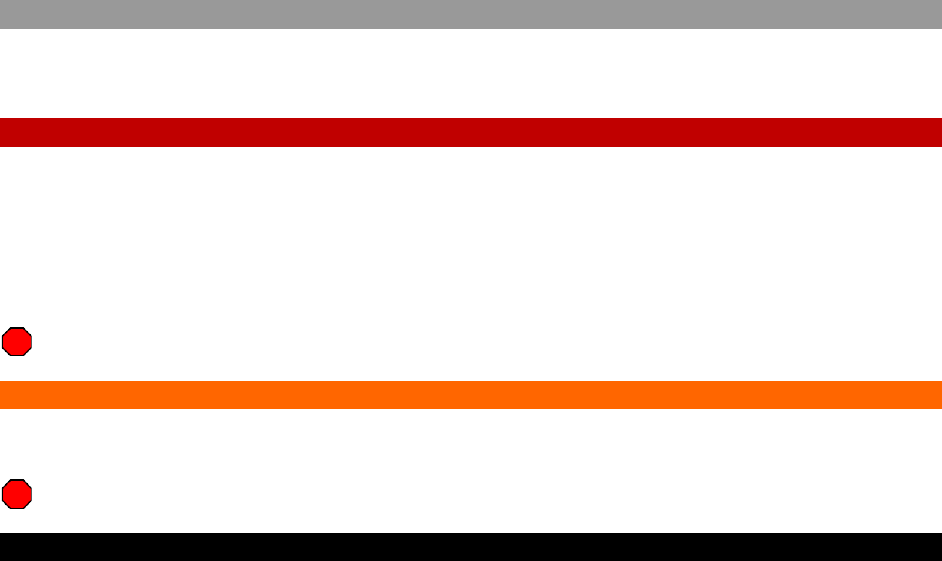
32
Version 22.0 Effective 02-25-2022
Behavioral Emergencies
Applies to adult and pediatric patients
Criteria
• This protocol is intended to be used with patients who are deemed to pose a danger to
themselves or others
CFR AND ALL PROVIDER LEVELS
• Call for law enforcement
• Airway management, vital signs, and appropriate oxygen therapy, if tolerated
• Verbal de-escalation (utilizing interpersonal communication skills)
• If verbal de-escalation is not successful or not possible, apply soft restraints, such as
towels, triangular bandages, or commercially available soft medical restraints, only if
necessary to protect the patient and others from harm
CFR STOP
EMT
• Check blood glucose level, if equipped, as soon as you are able to safely do so. If
abnormal, refer to the “AMS: Altered Mental Status” protocol, as indicated
EMT STOP
KEY POINTS/CONSIDERATIONS
• Assess the scene for safety and, if it is not, retreat to a safe location and obtain police
assistance
• Patient must NOT be transported in a face-down position
• Consider hypoxia, hypoperfusion, hypoglycemia, head injury, intoxication, other drug
ingestion, and other medical/traumatic causes of abnormal behavior
• Consider the possibility of a behavioral/developmental disorder such as autism
spectrum disorder or mental health problems
• A team approach should be attempted for the safety of the patient and the providers
• If the patient is in police custody and/or has handcuffs on, a police officer should
accompany the patient in the ambulance to the facility. The provider must have the
ability to immediately remove any mechanical restraints that hinder patient care at all
times
•
•
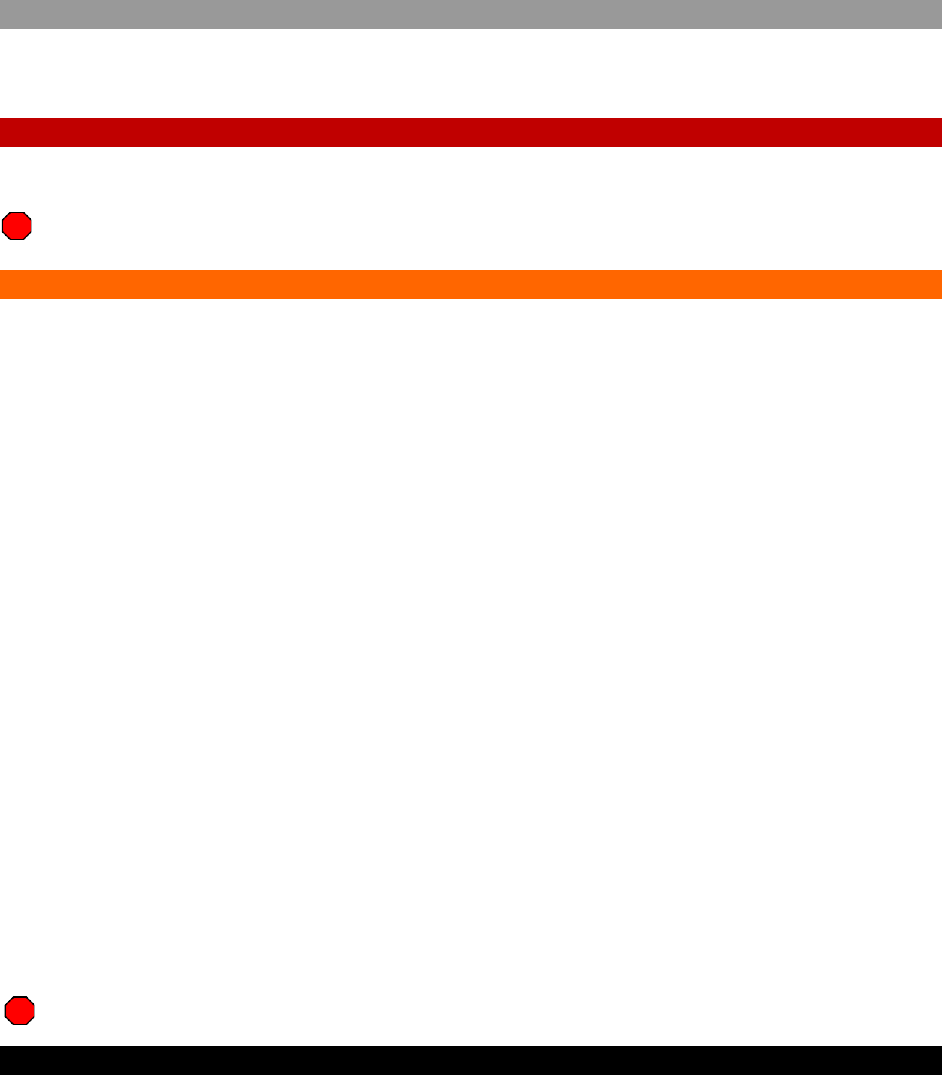
33
Version 22.0 Effective 02-25-2022
Carbon Monoxide Exposure – Suspected
Applies to adult and pediatric patients
CRITERIA
• For patients with smoke inhalation, patients for whom a carbon monoxide (CO) alarm
has gone off in the residence, or any other potential exposure to CO
CFR AND ALL PROVIDER LEVELS
• Any patient with suspected carbon monoxide poisoning should receive high flow
oxygen via non-rebreather mask (NRB)
CFR STOP
EMT
• An objective carbon-monoxide evaluation tool may be used to guide therapy, if
available
• Any pregnant (or potentially pregnant) woman should receive high flow oxygen and be
transported to the facility.
ASYMPTOMATIC potentially exposed people:
• An asymptomatic patient with a known CO level >25% should receive high flow
oxygen and be transported to the
• An asymptomatic patient with a CO level 12-25% should receive high flow oxygen for
30 minutes and then should be reassessed, unless the patient requests transport to
the facility.
• Strongly encourage transport if CO levels are not decreasing
SYMPTOMATIC patients:
• Carbon monoxide poisoning does not have specific, clear cut symptoms; other
medical conditions may present with dizziness, nausea, and/or confusion
• All symptomatic patients should be transported, regardless of CO level
• If there is no soot in the airway, consider CPAP* 5-10 cm H
2O (if the device delivers
100% oxygen)
• For the adult patient
• For older pediatric patients consider CPAP, as equipment size allows if
available and trained
MULTIPLE patients:
• Consult medical control for guidance regarding transport location decisions and on-
scene treatment and release when multiple patients are involved
• If there is potential for greater than 5 patients, consider requesting an EMS physician
to the scene, if available
EMT STOP
KEY POINTS/CONSIDERATIONS
• The Masimo RAD 57
®
is an example of an objective carbon-monoxide evaluation tool
• Consider contacting medical control to discuss appropriate facility destination
for patients with the following:
•
34
Version 22.0 Effective 02-25-2022
SpCO reading >25%
Loss of consciousness
Significant altered mental status or an abnormal neurologic exam
Pregnancy
• Pediatrics: Assure your device is approved for pediatric use and, if so, that
pediatric appropriate sensors are utilized
• Pregnant women: The fetal SpCO may be 10-15% higher than maternal
reading
• Smokers: Heavy smokers may have baseline SpCO levels up to 10%
• A misapplied or dislodged sensor may cause inaccurate readings
• Do not use tape to secure the sensor
• Do not place the sensor on the thumb or 5th digit
• There is no commercial endorsement implied by this protocol
• *If equipped and trained

35
Version 22.0 Effective 02-25-2022
Cardiac Related Problem
For pediatric, see “Cardiac Related Problem – Pediatric”
CRITERIA
• For patients presenting with suspected cardiac chest pain; angina or an anginal
equivalent
CFR AND ALL PROVIDER LEVELS
• Airway management and appropriate oxygen therapy
• Aspirin 324 mg (4 x 81 mg tabs) chewed, only if able to chew*
CFR STOP
EMT
• Acquire and transmit 12-lead ECG**
• For patients with a STEMI, confirmed by medical control, begin transport to a
facility capable of primary angioplasty if estimated arrival to that facility is
within 90 minutes of patient contact or if directed by medical control or regional
procedure
• If the patient requests, assist patient with his or her prescribed nitroglycerin, up to 3
doses, 5 minutes apart, provided the patient’s systolic BP is > 120 mmHg
EMT STOP
MEDICAL CONTROL CONSIDERATIONS
• Additional nitroglycerin 0.4 mg SL, or equivalent, every 5 minutes for EMT
• Consider medical control consultation, as needed, for determination of most
appropriate destination facility
KEY POINTS/CONSIDERATIONS
• Focus on maintaining ABCs, rapid identification, rapid notification, and rapid transport
to an appropriate facility
• Vitals, as well as12-lead ECG (if equipped and regionally approved), should be
assessed frequently during transport
• If the patient becomes hypotensive after nitroglycerin administration, place the patient
in a supine position, if there is no contraindication (such as severe pulmonary edema)
• Aspirin should not be enteric coated
• The patient may have been advised to take aspirin prior to arrival by emergency
medical dispatch. You may give an additional dose of aspirin (324 mg chewed) if there
is any concern about the patient having received an effective dose prior to your arrival
• Consider 12-lead ECG for adults, with any one of the following: dyspnea, syncope,
dizziness, fatigue, weakness, nausea, or vomiting
• *If equipped and trained for CFR level
• **If equipped, trained, and regionally approved
•

36
Version 22.0 Effective 02-25-2022
Cardiac Related Problem – Pediatric
CRITERIA
Pediatric patients who have known heart disease and/or have been operated on for
congenital heart disease have medical emergencies that are different from adults with
heart disease
Pediatric patients with congenital heart disease may:
• Have baseline oxygen saturations between 65 and 85% rather than above 94%
(ask care provider about patient’s usual oxygen saturation level)
• Develop sudden heart rhythm disturbances
• Be fed by either a nasogastric tube (tube in nose) or by gastrostomy (tube through
abdominal wall)
• Not have a pulse or accurate blood pressure in an extremity after heart surgery
• Have a pacemaker
CFR AND ALL PROVIDER LEVELS
• ABCs and vital signs, including blood pressure
• Keep patient on continuous pulse oximeter monitoring, if available (will monitor both
heart rate and SpO2)
• Ask parents if the patient has a heart condition and/or has been operated on (look for
a scar in the middle or side of chest); ask what type of heart condition it is
• Keep the child in a somewhat upright position to enable optimal breathing, or allow
child to be in position of comfort
• Ask parents what the child’s usual oxygen saturation is and provide only sufficient
oxygen to bring the SpO
2 to his or her usual baseline
• Ask parent if the patient has a pacemaker and/or internal defibrillator
• Do not give anything by mouth
• If patient has a fever, minimize the child’s clothing and keep the ambulance at a
comfortable temperature
CFR STOP
EMT
• Assess for signs of poor perfusion (such as prolonged capillary refill > 2 seconds, cool
and dusky distal extremities, poor radial and dorsalis pedis pulses, and/or
hypotension)
• If patient has a gastrostomy tube, suggest to parent/caregiver to open the tube to air
or aspirate stomach contents to improve the child’s ability to breathe
• Obtain vital signs including blood pressure every 15 minutes
• If patient has altered mental status, obtain fingerstick blood glucose and refer to the
“Altered Mental Status” protocol
EMT STOP

37
Version 22.0 Effective 02-25-2022
KEY POINTS/CONSIDERATIONS
• Chest pain in children is rarely a sign of a cardiac condition (it is more frequently
related to conditions such as costochondritis or pleuritis)
• Notify the destination facility ASAP and state whether the patient has signs of
cardiac failure or decompensation
• Infants with congenital heart disease may present with symptoms very similar to
septic shock (poor perfusion, poor distal pulse, tachypnea, or dusky appearance)
• Pediatric patients with a congenital heart condition often have oxygen saturations in
the 65-85% range. Too much oxygen may be detrimental and result in worsening
circulation
• Pediatric patients with a cardiac condition may have sudden arrhythmias that require
treatment, including SVT. Full cardiopulmonary monitoring should be done by ALS
• Transport to facility should not be delayed in ill pediatric cardiac patients
< 1 mo
< 1 yr
1 – 10 yr
• Systolic Hypotension:
< 60
< 70
(< 70 + 2 x age OR < 90)

38
Version 22.0 Effective 02-25-2022
Childbirth: Obstetrics
CRITERIA
• Childbirth is a natural phenomenon and the type of delivery cannot be regulated by
your level of certification – if an CFR is faced with anything but a normal delivery,
please feel comfortable calling medical control for assistance
CFR AND ALL PROVIDER LEVELS
• Management of a normal delivery
• Support the baby’s head over the perineum with gentle pressure
• If the membranes cover the head after it emerges, tear the sac with your
fingers or forceps to permit escape of the amniotic fluid
• Gently guide the head downward until the shoulder appears
• The other shoulder is delivered by gentle upward traction
• The infant’s face should be upward at this point
• Maintain firm grasp on infant
CFR STOP
EMT
• Management of Umbilical Cord Around Neck
• Umbilical cord around the neck is an emergency, as the baby is no longer
getting any oxygen either through the cord or by breathing
• If the cord is around the neck:
Unwrap the cord from around the neck, if possible
Clamp the umbilical cord with two clamps
Cut the cord between them
• Management of a Breech Delivery
• Support the buttocks or extremities until the back appears
• Grasp the baby’s ILIAC WINGS and apply gentle downward traction. DO NOT
pull on the legs or back, as this may cause spine dislocation or adrenal
hemorrhage
• Gently swing the infant’s body in the direction of least resistance
• By swinging anteriorly and posteriorly, both shoulders should deliver
posteriorly
• Splint the humerus bones with your two fingers; apply gentle traction with your
fingers
• Gentle downward compression of the uterus will assist in head delivery
• Swing the legs upward until the body is in a vertical position. This will permit
delivery of the head
• Management of Prolapsed Cord or Limb Presentation
• Place the mother in a face-up position with hips elevated
• Place a gloved hand in the vagina; attempt to hold baby’s head away from the
cord and maintain an airway for the baby

39
Version 22.0 Effective 02-25-2022
• Keep the cord moist using a sterile dressing and sterile water
• Transport as soon as possible to closest appropriate facility
EMT STOP
KEY POINTS/CONSIDERATIONS
• Obtain additional help for multiple births, as needed
• See “Childbirth: Newborn/Neonatal Care” protocol for subsequent instructions
• Determine the estimated date of expected birth, the number of previous pregnancies,
and number of live births
• Determine if the amniotic sac (bag of waters) has broken, if there is vaginal bleeding,
mucous discharge, or the urge to bear down
• Determine the duration and frequency of uterine contractions
• Examine the patient for crowning:
• If delivery is not imminent, transport as soon as possible
• If delivery is imminent, prepare for an on-scene delivery
• If multiple births are anticipated, but the subsequent births do not occur within 10
minutes of the previous delivery, transport immediately
• After delivery of the placenta, massage the lower abdomen
• Take the placenta and any other tissue to the facility for inspection
• Do not await the delivery of the placenta for transport
• If uterine inversion occurs (uterus turns inside out after delivery and extends through
the cervix), treat for shock and transport immediately. If a single attempt to replace the
uterus fails, cover the exposed uterus with moistened sterile towels
•

40
Version 22.0 Effective 02-25-2022
Childbirth: Newborn/Neonatal Care
CRITERIA
• For the evaluation and resuscitation of babies just delivered
Assess the infant’s respiratory status, pulse, responsiveness, and general condition
• If the infant is breathing spontaneously and crying vigorously, and has a pulse
> 100/min:
• Clamp the umbilical cord with two clamps, three inches apart, and cut the cord
between them at least 1 min after delivery. The first clamp should be 8–10
inches from the baby. Place the second clamp 3 inches from the first clamp
toward the mother
• Cover the infant’s scalp with an appropriate warm covering
• Wrap the infant in a dry, warm blanket or towels and a layer of foil or plastic
wrap over the layer of blankets or towels or use a commercial-type infant
swaddler, if one is provided with the OB kit. Do not use foil alone
• Keep the infant warm and free from drafts. Continuously monitor the infant’s
respirations
• If the infant is not breathing spontaneously or not crying vigorously:
• Gently rub the infant’s lower back
• Gently tap the bottom of the infant’s feet
• If the respirations remain absent, gasping, or become depressed (< 30/min)
despite stimulation, if the airway is obstructed, or if the heart rate is < 100/min:
• Clear the infant’s airway by suctioning the mouth and nose gently with a bulb
syringe, and then ventilate the infant at a rate of 40–60 breaths/minute with an
appropriate BVM as soon as possible, with a volume just enough to see chest
rise. Start with room air. If no response after 30–60 seconds of effective
ventilation add oxygen
• Each ventilation should be given gently, over one second per respiratory cycle,
assuring that the chest rises with each ventilation
• Monitor the infant’s pulse rate (by palpation at the base of the umbilical cord or
by auscultation over the heart), and apply continuous pulse oximetry using
(ideally the right) wrist or palm, *if available and trained
• If th
e pulse rate drops < 60 beats per minute at any time:
• Perform chest compressions with assisted ventilations at a 3:1 compression to
ventilation ratio
CFR AND EMT STOP
KEY POINTS/CONSIDERATIONS
• Hypothermia and hypoglycemia may decrease the likelihood of successful
resuscitation
• Begin transport to the closest appropriate facility as soon as possible
•
EMT
CFR AND ALL PROVIDER LEVELS

41
Version 22.0 Effective 02-25-2022
Difficulty Breathing: Asthma/Wheezing
For pediatric, see “Difficulty Breathing: Asthma/Wheezing – Pediatric”
or “Difficulty Breathing: Stridor – Pediatric”
CRITERIA
• Patients with effective but increased work of breathing with wheezing
• Excludes traumatic causes of dyspnea
• Excludes pneumothorax
CFR AND ALL PROVIDER LEVELS
• Assess for foreign body airway obstruction
• Refer immediately to the “Extremis: Foreign Body Obstructed Airway” protocol,
if indicated
• Ongoing assessment of the effectiveness of breathing
• Refer to the “Extremis: Respiratory Arrest/Failure” protocol, if necessary
• Administer supplemental oxygen; refer to the “Resources: Oxygen Administration”
protocol
• Assist patient with his or her own medications as appropriate, see “Resources:
Prescribed Medication Assistance” protocol
• Facilitate transportation, ongoing assessment, and supportive care
CFR STOP
EMT
• If patient is wheezing:
• Administer albuterol 2.5 mg in 3 mL (unit dose) via nebulizer*
Oxygen powered nebulizer devices for use in accordance with
manufacturer specifications (typically ~6-8 LPM)
• May repeat to a total of three doses if symptoms persist
• Continuous Positive Airway Pressure (CPAP) 5-10 cm H
2O, as needed*
• If the patient is in severe distress, see medical control considerations for use of
epinephrine
EMT STOP
MEDICAL CONTROL CONSIDERATIONS
• Additional albuterol
• Epinephrine for critical asthma attack* (EMT Syringe Epinephrine or autoinjector)
KEY POINTS/CONSIDERATIONS
• Wheezing does not always indicate asthma. Consider allergic reaction, airway
obstruction, and pulmonary edema
• Allow the patient to maintain position of comfort when safe to do so
• Do not force the patient to lie down
• Do not agitate the patient
42
Version 22.0 Effective 02-25-2022
• Observe airborne and/or droplet precautions in appropriate patients, such as those
with suspected tuberculosis
• Do not delay transport to complete medication administration
• *If equipped and trained

43
Version 22.0 Effective 02-25-2022
Difficulty Breathing: Asthma/Wheezing – Pediatric
CRITERIA
• Patients with increased work of breathing (retractions, grunting, nasal flaring) and
prolonged expiration, wheezing and/or poor air movement
• Excludes traumatic causes of dyspnea
• Excludes pneumothorax
• Excludes stridor/croup (see “Difficulty Breathing: Stridor – Pediatric” protocol)
CFR AND ALL PROVIDER LEVELS
• Assess for foreign body airway obstruction
• Refer immediately to the “Extremis: Pediatric Foreign Body Obstructed Airway”
protocol, if indicated
• Ongoing assessment of the effectiveness of breathing
• Refer to the “Extremis: Pediatric Respiratory Arrest/Failure” protocol, if
necessary
• Allow patient to determine position of comfort. If patient cannot do so, have patient sit
upright or elevate the head of the stretcher
• Administer supplemental oxygen; refer to the “Resources: Oxygen Administration”
protocol
• Assist patient with their own asthma medications (see “Resources: Prescribed
Medication Assistance” protocol), as appropriate
• Facilitate transportation, ongoing assessment, and supportive care
CFR STOP
EMT
• Administer albuterol 2.5 mg in 3 mL (unit dose) via nebulizer* set at 5-8 LPM
• May repeat to a total of three doses if symptoms persist
• If the patient is in severe distress, see medical control considerations for use of
epinephrine
• For older pediatric patients consider CPAP for EMT, as equipment size allows if
available and trained
EMT STOP
MEDICAL CONTROL CONSIDERATIONS
• Additional albuterol
• Epinephrine for critical asthma attack* (EMT Syringe Epinephrine kits or autoinjector)
KEY POINTS/CONSIDERATIONS
• Expiratory wheezing does not always indicate asthma. Consider allergic reaction,
airway obstruction, pulmonary edema
• In children under 2 yr old, bronchiolitis is the most common cause of wheezing.
Bronchiolitis may not respond to albuterol. Gentle nasal suctioning is the primary
treatment along with oxygen, particularly in infants.
44
Version 22.0 Effective 02-25-2022
• Allow the patient to maintain position of comfort when safe to do so
• Do not force the patient to lie down
• Do not agitate the patient
• Observe airborne and/or droplet precautions in appropriate patients, such as those
with suspected pertussis (whooping cough)
• Do not delay transport to complete medication administration
• *If equipped and trained

45
Version 22.0 Effective 02-25-2022
Difficulty Breathing: Stridor – Pediatric
• Assess for foreign body airway obstruction
• Refer immediately to the “Extremis: Foreign Body Obstructed Airway –
Pediatric” protocol, if indicated
• Assess for anaphylaxis
• Refer immediately to the “Anaphylaxis – Pediatric” protocol, if indicated
• Ongoing assessment of the effectiveness of breathing
• Refer to the “Extremis: Respiratory Arrest/Failure – Pediatric” protocol, if
necessary
• Administer supplemental oxygen; refer to the “Resources: Oxygen Administration”
protocol
• Consider high concentration, humidified, blow-by oxygen delivered by tubing
or face mask held about 3-5 inches from face (as tolerated)
• Facilitate transportation, ongoing assessment, pulse oximeter, and supportive care
CFR AND EMT STOP
KEY POINTS/CONSIDERATIONS
• If the patient has stridor (inspiratory), it is often an upper airway problem (physiologic
or mechanical obstruction)
• Viral croup should be considered in children presenting with absent or low-grade fever,
barking cough, stridor, and/or sternal retractions
• Epiglottitis should be considered in children with a high fever, muffled voice, tripod
position, and/or drooling
• A vaccination history should be obtained because unvaccinated children are at
higher risk of epiglottitis
• Agitating a child with croup or epiglottitis could cause a complete airway obstruction
• Limit interventions that may cause unnecessary agitation in a child with stridor such as
assessment of blood pressure in a child who can still breathe, cough, cry, or speak
EMT
CFR AND ALL PROVIDER LEVELS

46
Version 22.0 Effective 02-25-2022
Environmental – Cold Emergencies
Applies to adult and pediatric patients
CRITERIA
• For patients presenting with localized cold injury or hypothermia
CFR AND ALL PROVIDER LEVELS
• ABCs, vital signs
• Remove the patient from the cold environment
• For local cold injury:
• Protect areas from pressure, trauma, and friction
• Do not break blisters
• Do not rub the injured area
• Remove clothing and jewelry
• For generalized hypothermia:
• Handle patient carefully to prevent cardiac dysrhythmias
• Gently remove wet clothing and dry the patient
• If oxygen is required, provide warm, humidified oxygen, if available
• Place heat packs, if available, in the patient’s groin area, lateral chest, and
neck
• Wrap the patient in dry blankets and maintain a warm environment
Especially for elderly as well as infants and young pediatric patients,
cover the head with a cap or towel to decrease heat loss
CFR STOP
EMT
• Rewarm the extremity (if the means to do so are available) only if anticipated time to
the facilty exceeds 60 minutes, the patient presents with early or superficial local cold
injury only, and there is no concern that the extremity will freeze again:
• Immerse the affected part in a warm water bath ≤ 105 °F; water should feel
warm, but not hot
• Frequently stir the water and assure it remains warm
• Continue the immersion in warm water until the extremity is soft, and color and
sensation return
• Dress the area with dry, sterile dressings
If a hand or foot is involved, place sterile dressings between fingers or
toes
Prevent the warmed part from freezing again
EMT STOP
KEY POINTS/CONSIDERATIONS
• Patients with severe hypothermia may have very slow heart rates
• If defibrillation is required, provide no more than three shocks
•
•
47
Version 22.0 Effective 02-25-2022
• Pulse oxygenation measurement may be inaccurate if the patient is hypothermic. If the
patient is cyanotic and in apparent respiratory distress, administer oxygen

48
Version 22.0 Effective 02-25-2022
Environmental – Heat Emergencies
Applies to adult and pediatric patients
• ABCs, vital signs
• Loosen or remove clothing
• For patients presenting with moist, pale, and normal to cool skin temperature:
• If the patient is not nauseated and able to drink water without assistance, have
the patient drink water
• For patients presenting with hot, flushed, and dry skin:
• Apply cold packs to patient’s neck, groin, and armpits
• Keep the patient’s skin wet by applying wet sponges or towels
CFR AND EMT STOP
KEY POINTS/CONSIDERATIONS
• Stable patients with normal mental status and no signs of hot, dry skin may only
require oral rehydration and cooling
• Do not delay transport to treat the patient on the scene; transport is suggested for all
patients who present with a heat emergency
• Water intoxication occurs when patients ingest excessive water which causes
potentially life-threatening electrolyte abnormalities
• Suspect in long distance runners who consume large amounts of water and
present with collapse or confusion
• Cool the patient, as indicated, and contact medical control before
administering any oral fluid to a patient with suspected water intoxication
•
EMT
CFR AND ALL PROVIDER LEVELS

49
Version 22.0 Effective 02-25-2022
Opioid (Narcotic) Overdose
Applies to adult and pediatric patients
CRITERIA
• *Only administer naloxone (Narcan
®
) to patients with suspected opioid overdose
with hypoventilation (slow/shallow or ineffective respirations). For provider and
patient safety, do not administer without a medical control order if there are
adequate ventilations
• ABCs, vital signs
• Airway management and appropriate oxygen therapy
• Check blood glucose level, if equipped
• Refer to the “General: Altered Mental Status” protocol, as indicated
• Determine what and how much was taken, along with the time, if possible
• For suspected opioid overdose and hypoventilation* or respiratory arrest, administer
naloxone (Narcan
®
) 2 mg** intranasal; 1 mg per nostril, may repeat once in 5 minutes,
if no significant improvement occurs
• In the pediatric patient, administer naloxone (Narcan
®
) 1 mg** intranasal, ½
mg per nostril, may repeat once in 5 minutes, if no significant improvement
occurs
CFR AND EMT STOP
KEY POINTS/CONSIDERATIONS
• *Only administer naloxone (Narcan
®
) to patients with suspected opioid overdose
with hypoventilation (slow/shallow or ineffective respirations). For provider and
patient safety, do not administer without a medical control order if there are
adequate ventilations
• **May substitute alternative FDA and SEMAC approved, commercially prepared 4mg
nasal spray unit dose device
• This device is approved for the full 4 mg dose in the adult or pediatric patient
• Administer 4mg in 1 nostril as a single spray
• BLS providers should be aware that ALS providers may titrate the naloxone (Narcan
®
)
dose to attain adequate spontaneous ventilation
• If high suspicion of opioid overdose, providers may administer naloxone (Narcan
®
)
prior to checking a blood glucose level
• Do NOT give naloxone (Narcan
®
) to any intubated patient without a medical control
order unless they are in cardiac arrest
•
EMT
CFR AND ALL PROVIDER LEVELS

50
Version 22.0 Effective 02-25-2022
Poisoning
Applies to adult and pediatric patients
CRITERIA
• This protocol is intended for the undifferentiated toxic exposure
• For altered mental status and hypoglycemia, see the “AMS: Altered Mental
Status” protocol
• For opioid (narcotic) overdose, see the “Opioid (Narcotic) Overdose” protocol
• For carbon monoxide exposure see “Carbon Monoxide – Suspected” protocol
• Decontamination, as needed
• ABCs and vital signs
• Airway management and appropriate oxygen therapy
• Determine what and how much was taken, along with the time and duration of the
exposure
• Check a blood glucose level, if equipped
• For contamination of the skin or eyes, refer to the “Trauma: Burns” protocol
CFR AND EMT STOP
KEY POINTS/CONSIDERATIONS
• Take precautions to assure providers do not get exposed
• For inhalation exposures, assure patient is moved to fresh air
•
EMT
CFR AND ALL PROVIDER LEVELS

51
Version 22.0 Effective 02-25-2022
Seizures
Applies to adult and pediatric patients
• Airway management and appropriate oxygen therapy
• Suction the airway as needed
• Position the patient on the side if vomiting
• Do not put anything in the patient’s mouth when the patient is actively seizing
Utilize an appropriate airway adjunct, if needed, after the seizure has
ended
• Protect the patient from harm
• Remove hazards from the patient’s immediate area
• Avoid unnecessary restraint
• Check a blood glucose level, if equipped.
• If abnormal, refer to the “AMS: Altered Mental Status” protocol
• Ongoing assessment of the effectiveness of breathing
• Refer to the “Extremis: Respiratory Arrest/Failure” or “Extremis: Respiratory
Arrest/Failure – Pediatric” protocol, if necessary
CFR AND EMT STOP
KEY POINTS/CONSIDERATIONS
• Patients may become confused and combative after a seizure (in the postictal state)
• Protect yourself and the patient
• Obtain law enforcement assistance, if needed
• Status epilepticus (continuing seizure) is a critical medical emergency. Anticonvulsant
medication should be administered as soon as possible, preferably starting no later
than 5-10 minutes after the onset of the seizure
•
EMT
CFR AND ALL PROVIDER LEVELS

52
Version 22.0 Effective 02-25-2022
Sepsis/Septic Shock
For pediatric, see “Sepsis/Septic Shock – Pediatric”
Criteria
Protocol activated for an adult patient with all three of the following:
1. Suspected infection
2. Hypotension (systolic BP < 90 mmHg) OR altered mental status
3. At least two of the following:
• Heart rate > 90
• Respiratory rate > 20 or PaCO2 < 32 mmHg
• Temperature > 100.4° F (38° C), if available
• White blood count > 12,000 or < 4,000 cells/mm
3
or > 10% bands, if available
CFR AND ALL PROVIDER LEVELS
• ABCs and vital signs, including blood pressure
• Airway management and high flow oxygen (non-rebreather as tolerated)
• If the patient has altered mental status, refer to the “AMS: Altered Mental Status”
protocol
• Attempt to maintain normal body temperature
CFR STOP
EMT
• Advise the destination facility that the patient has signs of sepsis/septic shock
• Obtain vital signs, including blood pressure, frequently
EMT STOP
KEY POINTS/CONSIDERATIONS
• Sepsis/septic shock is a life-threatening condition and must be recognized and treated
as rapidly as possible
• Concern for any new or worsening infection includes reported fever, shaking chills,
diaphoresis, new cough, difficult or less than usual urination, unexplained or newly
altered mental status, flushed skin, pallor, new rash, or mottling

53
Version 22.0 Effective 02-25-2022
Sepsis/Septic Shock – Pediatric
CRITERIA
Pediatric patients with suspected infection who are abnormally hot or cold to touch, and/or
have a fever over 100.4° F (38° C), or less than 96.8° F (36° C) and high heart rate
(age dependent) and/or high respiratory rate (age dependent) with:
• Poor perfusion (capillary refill > 3 seconds, decreased peripheral pulses, distal
extremity [hands/feet] coolness and dusky color, or age-dependent hypotension)
and/or
• Need for oxygen, and/or
• Altered mental status (lethargy, irritability)
CFR AND ALL PROVIDER LEVELS
• ABCs and vital signs, including blood pressure
• Airway management and high flow oxygen (non-rebreather as tolerated)
• If the patient has altered mental status, refer to the “AMS: Altered Mental Status”
protocol
• Attempt to maintain normal body temperature
CFR STOP
EMT
• Advise the destination facility forthwith that the patient has signs of sepsis/septic
shock
• Obtain vital signs, including blood pressure, frequently
EMT STOP
KEY POINTS/CONSIDERATIONS
• Sepsis/septic shock is a life-threatening condition in children and must be recognized
and treated as rapidly as possible
• Vital sign criteria for defining sepsis:
< 1 mo. < 1 yr 1 yr-11 yr >11 yr
o Tachycardia >180 >180 > 140 >110
o Tachypnea > 60 > 40 > 30 >20
o Hypotension* < 60 < 70 (< 70 + 2 x age) < 90
• *Blood pressures may be very difficult to obtain in infants – assure the respiratory rate
and pulse are measured accurately
• Communication with the destination facility is critical so that they can prepare to treat
the child aggressively
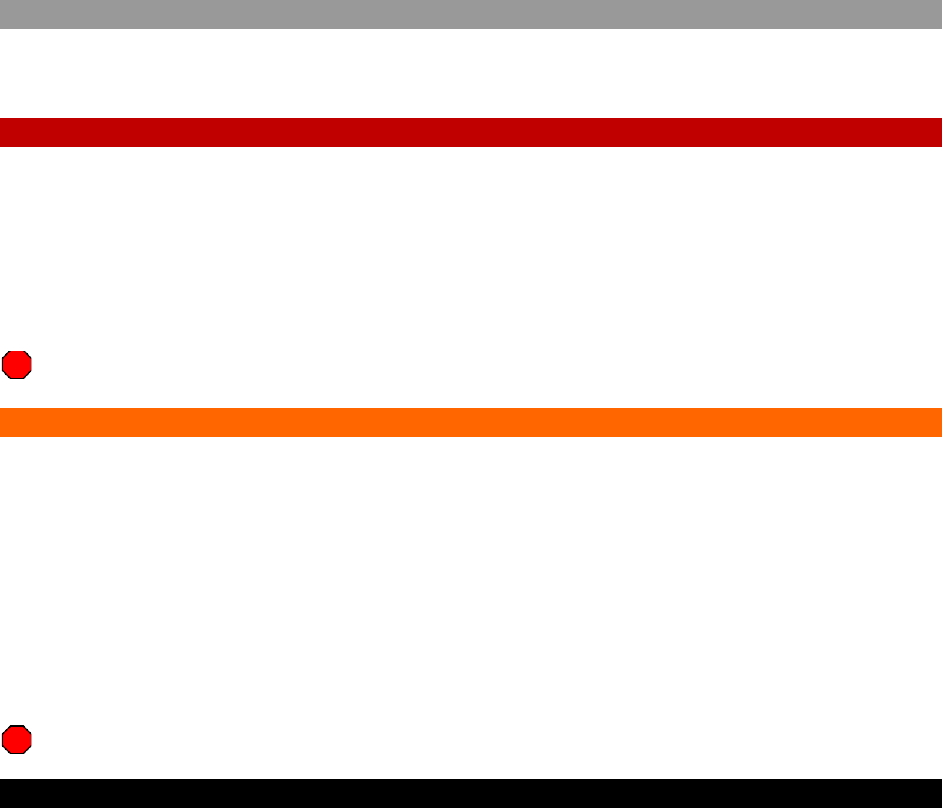
54
Version 22.0 Effective 02-25-2022
Stroke
Applies to adult and pediatric patients
CRITERIA
• For patients presenting with acute focal neurologic deficits including, but not limited to,
slurred speech, facial droop, and/or unilateral (one-sided) weakness or paralysis
CFR AND ALL PROVIDER LEVELS
• ABCs and vital signs
• Airway management and appropriate oxygen therapy
• Check a blood glucose level, if equipped.
• If abnormal, refer to the “AMS: Altered Mental Status” protocol
• Determine the “Last Known Well”; the exact time the patient was last in his or her
usual state of health and/or seen without symptoms by interviewing the patient,
family, and bystanders (this may be different than the “Time of Symptom Onset”)
CFR STOP
EMT
• Perform a neurological exam, including Cincinnati Stroke Scale and other regionally
approved and indicated stroke scale
• If time from last known well or time of symptom onset to estimated arrival in the ED will
be less than 3.5 hours, unless otherwise regionally designated, transport the patient
to a NYS DOH Designated Stroke Center, or consult medical control to discuss an
appropriate destination facility
• Follow any local or regional guidelines for triage of stroke patients to centers with
endovascular capabilities, if available
• Notify the destination facility ASAP
• Do not delay transport
•
EMT STOP
KEY POINTS/CONSIDERATIONS
• Make sure to collect family or witness contact information to assist with facility care
• Make sure to record Last Known Well and who reported that information as part of
your verbal report at the facility and in your written documentation
• “Time of Symptom Onset” is also a key piece of information if available from
witnesses
Cincinnati Prehospital Stroke Scale:
• Have the patient repeat, “You can’t teach an old dog new tricks”
• Assess for correct use of words and lack of slurring
• Have the patient smile
• Assess for facial droop
• Have the patient close eyes and hold arms straight out for 10 seconds
• Assess for arm drift or unequal movement of one side

55
Version 22.0 Effective 02-25-2022
Technology Assisted Children
CRITERIA
• Children with special health care needs requiring technological assistance for life
support:
• Tracheostomy
Breathing tube in neck
• Central venous catheters (tunneled catheter, Broviac catheter, Mediport,
PICC)
Catheters that enter a large (central) vein
• CSF shunt (e.g. ventriculoperitoneal or V-P shunt)
Internal tube that drains spinal fluid from the brain into the abdomen
• Gastrostomy (PEG tube, MIC-KEY
®
“button”) or J-tube
Feeding tube that goes through the abdominal wall
• Colostomy or ileostomy
Bowel connected through abdominal wall for collection of waste in a bag
• Ureterostomy or nephrostomy tube
Connection of the urinary system through the abdominal wall or through
the back for collection of urine in a bag
• Foley catheter
Catheter in urethra to collect urine from the bladder into a bag
CFR AND ALL PROVIDER LEVELS
• ABCs and vital signs including blood pressure
• Basic airway management if needed, give high flow oxygen (non-rebreather) if needed
• Supportive measures (device-specific):
• Tracheostomy
If on ventilator and there are respiratory concerns, disconnect and
attempt to ventilate via tracheostomy adapter using BVM
If tracheostomy tube is fully or partially dislodged, remove it, cover
tracheostomy stoma with an occlusive dressing, and ventilate via mouth
and nose using BVM
• Central venous catheters: if catheter is broken or leaking, clamp (pinch off)
catheter between patient and site of breakage or leakage
• Gastrostomy tube or button, ureterostomy or nephrostomy tube: if tube or
button is fully dislodged, cover the site with an occlusive dressing; if partially
dislodged, tape in place
• Gastrostomy, colostomy, ileostomy, or nephrostomy: if stoma site is bleeding,
apply gentle direct pressure with a saline-moistened gauze sponge
• Foley catheter: if catheter is dislodged, tape in place
CFR STOP

56
Version 22.0 Effective 02-25-2022
EMT
• Notify the destination facility ASAP and state that the patient has special health care
needs that requires technological assistance (be specific)
Obtain frequent vital signs, including blood pressure
EMT STOP
KEY POINTS/CONSIDERATIONS
• Listen to the caregivers; they know their child best. Allow them to assist with care.
• Inquire about:
• Presence of a Patient Care Plan (PCP)
• Syndromes/diseases
• Devices/medications
• Child’s baseline abilities
• Usual vital signs
• Symptoms
• What is different today
• Best way to move the child
• Look for MedicAlert
®
jewelry, Emergency Information Form (EIF), or Patient Care Plan
(PCP), or other health care forms, if usual caregiver is not available
• Take Emergency Information Form (EIF), Patient Care Plan, or other health care
forms to the facility with the patient
• Assess and communicate with the child based on developmental, not chronological,
age
• Take necessary specialized equipment (e.g. patient trach/ventilator pack, G-tube
connectors, etc.) to the facility with the patient, if possible
•
•
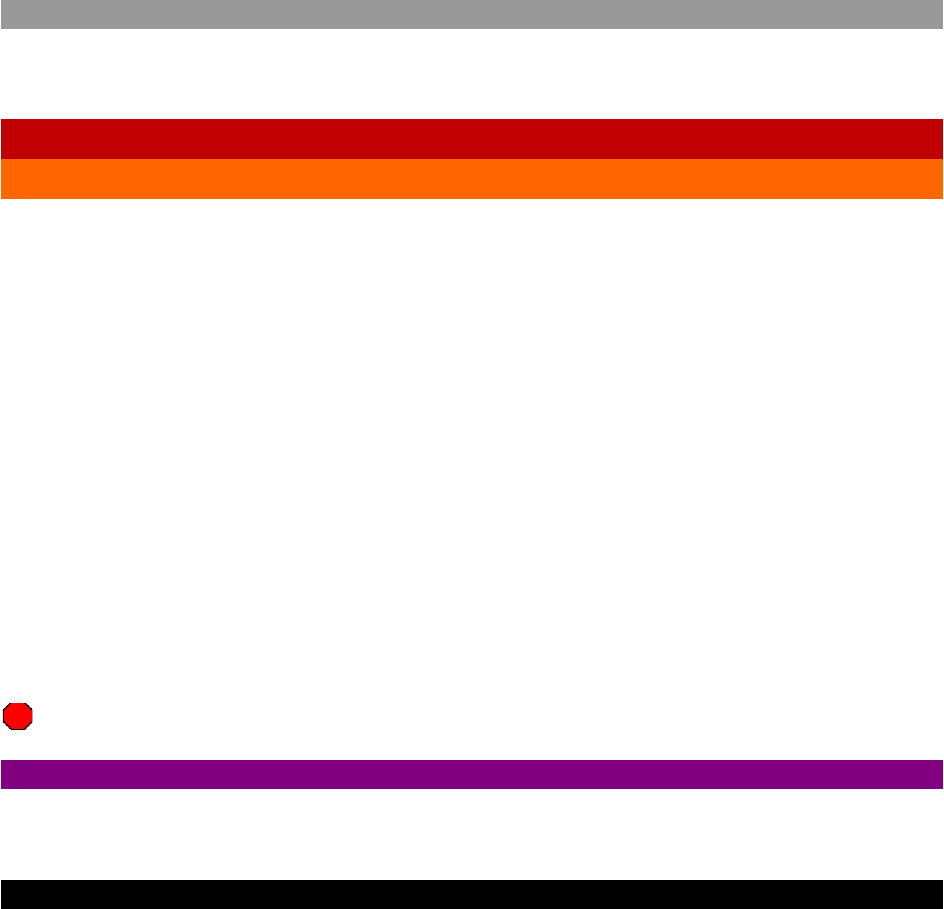
57
Version 22.0 Effective 02-25-2022
Total Artificial Heart (TAH)
CRITERIA
• Any request for service that requires evaluation and transport of a patient with a Total
Artificial Heart.
• Assess airway and breathing. Hypertension or volume overload can quickly cause
pulmonary edema to develop
• Do not use an AED or cardiac monitor.
• Assess pulse and artificial heart function:
• If no pulse present:
Consider early consult with TAH coordinator or medical control
Check for severed or kinked TAH driveline (address if possible)
Check battery position and power status (replace if possible)
Use the backup driver, or hand pump, if available
Do not perform chest compressions or place an AED
• Assess blood pressure: goal blood pressure is >90 mmHg and <150 mmHg
• Perform a secondary assessment and treat per protocol
• If unresponsive with a pulse, evaluate for noncardiac etiologies
• Notify the receiving facility that your patient has a TAH while on scene or
promptly after initiation of transport regardless of patient’s complaint
• Assure that patient has both drivers (compressors), hand pump, all batteries, and
power cords for transport
• Any trained support member should remain with patient
CFR AND EMT STOP
MEDICAL CONTROL CONSIDERATIONS
• Termination of resuscitation
• Consultation with a TAH program provider
KEY POINTS/CONSIDERATIONS
• TAH patients have had their heart removed and replaced with a rigid device which
pneumatically pumps blood throughout the body
• As these patients do not have a heart, there is no indication for an ECG or cardiac
monitoring. A functioning TAH will not result in any measurable electrical activity
• TAH patients are on anticoagulation and may have significant bleeding with minor
injuries
• The TAH patient has normal pulse and blood pressure detectable by conventional
methods and are highly preload and afterload sensitive:
• Target blood pressure is <150 mmHg and > 90 mmHg
• Pulse rate is set and regular, between 120-135 bpm
EMT
CFR AND ALL PROVIDER LEVELS

58
Version 22.0 Effective 02-25-2022
Ventricular Assist Device (VAD)
CRITERIA
• Any request for service that requires evaluation and/or transport of a patient with a
Ventricular Assist Device (VAD)
CFR AND ALL PROVIDER LEVELS
• Assess airway and breathing. Treat airway obstruction or respiratory distress per
protocol. Treat medical or traumatic conditions per protocol.
• Assess circulation:
• Auscultate (listen with a stethoscope) over the precordial/epigastric
(heart/upper stomach) area for a motorized “hum” and simultaneously
visualize the controller for a green light or lit screen
• Assess perfusion based on mental status, capillary refill, and skin color
• In continuous flow VAD patients (HeartMate II
, Heartware
, or axial flow
device), the absence of a palpable pulse is normal even in the setting of a
normally functioning device. Patients may not have a readily measurable
blood pressure
• In pulsatile flow VAD patients with a HeartMate 3
centrifugal device, patients
may have a palpable pulse (pulse is generally set to 30 BPM) in the setting of
a normally functioning device, yet may not have a readily measurable blood
pressure
• Perform CPR only when there are no signs of flow or perfusion (the person is
unresponsive, pulseless, and there is no evidence of the pump functioning [eg:
no motor “hum”])
• Assess pump function:
• Ascertain, and make note of: pump model, installing institution, and institution
VAD coordinator phone number from a tag located on the pocket controller.
Patients may also have a medical bracelet, necklace, or wallet card with this
information
• Perform a secondary assessment and treat per appropriate protocol
• Notify the receiving facility promptly and consider early consultation with the
VAD coordinator or medical control, regardless of the patient’s complaint
• Assure that patient has the power unit, extra batteries, and backup controller for
transport
• A trained support member should remain with patient
CFR STOP
EMT
• Unless otherwise directed by medical control, transport patient to a facility capable of
managing VAD patients
EMT STOP

59
Version 22.0 Effective 02-25-2022
KEY POINTS/CONSIDERATIONS
• Community patients with VADs are typically entirely mobile and independent
• Trained support members include family and caregivers who have extensive
knowledge of the device, its function, and its battery units. They may act as a resource
to the EMS provider when caring for a VAD patient
• One set of fully charged batteries provides 8-10 hours of power:
• If the battery or power is low, the batteries need to be replaced immediately
• Assist with the replacement of batteries if directed by patient/caregiver
• Never disconnect both batteries at once as this can cause complete loss
of VAD power
• Keep the device components dry
• The most common complication in VAD patients is infection. VAD patients are
susceptible to systemic illness, sepsis, and septic shock due to their abdominal
driveline as a conduit of infection
• Patients with a VAD are highly preload dependent and afterload sensitive. Low flow
alarms are frequently due to MAP >90 mmHg. The devices are sensitive to alterations
in volume status and careful volume resuscitation is often necessary
• VAD patients are heavily anticoagulated and susceptible to bleeding complications
• Patients may have VF/VT and be asymptomatic
Controller Device Normal Values:
Heartmate II
Heartmate 3
HVAD
Speed 8,000-10,000 RPM 5,000-6,000 RPM 2400-3200 RPM
Power 4-7 watts 3-7 watts 3-6 watts
Flow 4-8 L/min 3-6 L/min 3-6 L/min
Pulsatility Index (PI) 4-6 1-4 NA
60
Version 22.0 Effective 02-25-2022
Trauma Protocols
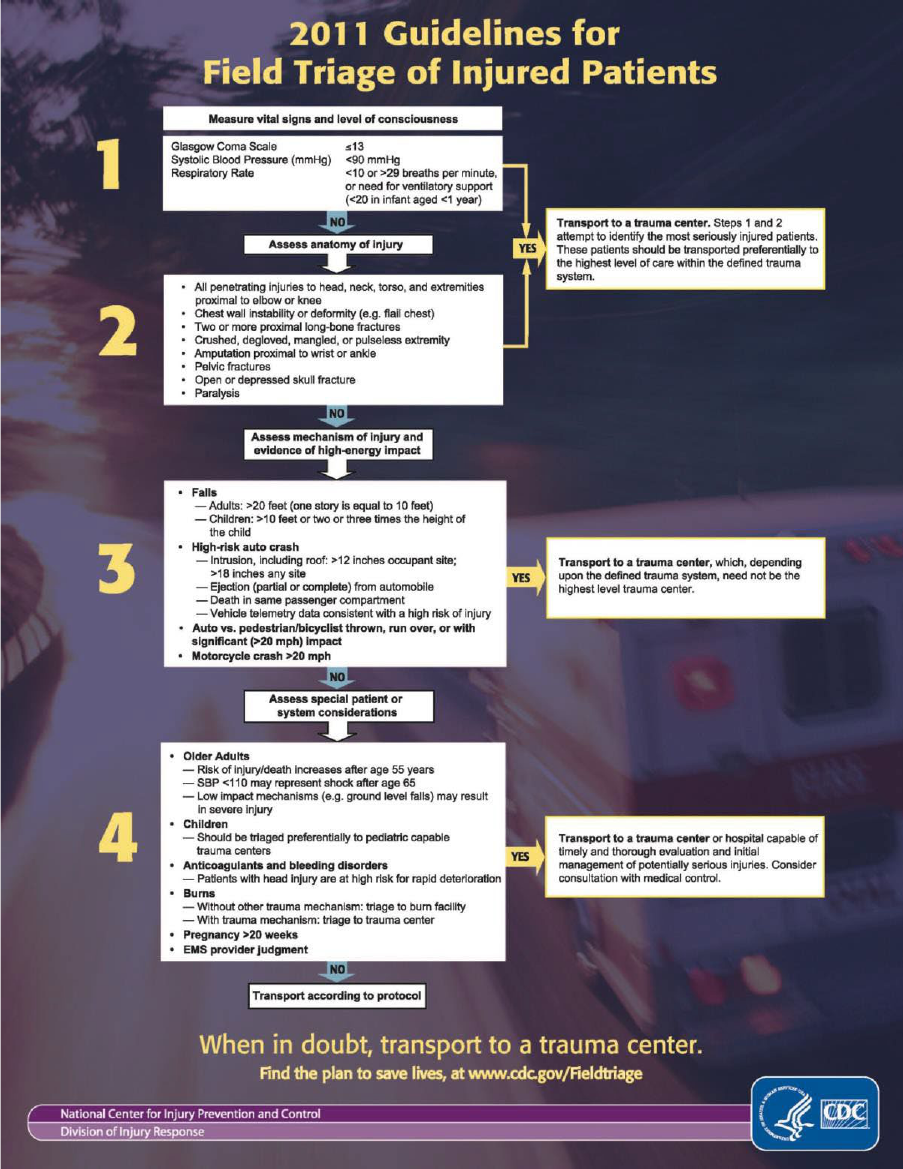
61
Version 22.0 Effective 02-25-2022
Trauma Patient Destination
Applies to adult and pediatric patients

62
Version 22.0 Effective 02-25-2022
Amputation
Applies to adult and pediatric patients
• Refer immediately to the “Trauma: Bleeding/Hemorrhage Control” protocol, as
indicated
• ABCs and vital signs
• Elevate and wrap the stump with moist sterile dressings and cover with dry bandage
• Consider spinal motion restriction, refer to “Trauma: Suspected Spinal Injuries”
protocol
• Provide or direct care for amputated part:
• Moisten sterile dressing with sterile saline solution and wrap amputated part
• Place the severed part in a water-tight container, such as a sealed plastic bag
• Place this container on ice or cold packs, using caution to avoid freezing the
limb
CFR AND EMT STOP
KEY POINTS/CONSIDERATIONS
• Distal amputations (those distal to wrist or ankle) do not typically require a trauma
center
• Transport the amputated part with the patient, if possible, but do not delay transport to
search for amputated part
• Consider medical control consultation if there is uncertainty regarding appropriate
destination facility
EMT
CFR AND ALL PROVIDER LEVELS

63
Version 22.0 Effective 02-25-2022
Avulsed Tooth
Applies to adult and pediatric patients
CRITERIA
• For permanent teeth only
• ABCs and vital signs
• Hold the tooth by the crown (not the root)
• Quickly rinse the tooth with saline before reimplantation, but do not brush off or clean
the tooth of tissue
• Remove the clot from the socket; suction the clot, if needed
• Reimplant the tooth firmly into its socket with digital pressure
• Have the patient hold the tooth in place using gauze and bite pressure
• Report to facility staff that a tooth has been reimplanted
CFR AND EMT STOP
KEY POINTS/CONSIDERATIONS
• The best transport medium for an avulsed tooth is in the socket, in the appropriate
situation
• The best chance for success is when reimplantation occurs within five minutes
of the injury
• If the patient has altered mental status, do not reimplant
• If the patient must be transported in a supine position, do not reimplant
• Do not reimplant if the alveolar bone/gingiva are missing, or if the root is
fractured
• Do not reimplant if the patient is immunosuppressed, or reports having cardiac
issues that require antibiotics prior to procedures
• If the patient is not a candidate for reimplantation and avulsed a permanent tooth,
place the avulsed tooth in interim storage media (commercial tooth preservation
media, lowfat milk, patient’s saliva, or saline) and keep cool. Avoid tap water storage,
if possible, but do not allow the permanent tooth to dry
EMT
CFR AND ALL PROVIDER LEVELS

64
Version 22.0 Effective 02-25-2022
Bleeding/Hemorrhage Control
Applies to adult and pediatric patients
CRITERIA
• This protocol authorizes the use of hemostatic dressings, compressive devices, and
commercially manufactured tourniquets
• These devices are not mandatory for any agency to stock or carry
• Junctional tourniquets, wound closure devices, and other hemostatic devices may be
used in accordance with manufacturer instructions, if regionally approved
• Tactical application of these devices beyond this protocol may be regionally approved
• Immediate intervention for severe bleeding:
• Apply pressure directly on the wound with a dressing
Hemostatic gauze* may be applied with initial direct pressure
Rolled gauze may be used if hemostatic gauze is not available
Pack wound and hold pressure
• If bleeding soaks through the dressing, apply additional dressings
• If bleeding is controlled, apply a pressure dressing to the wound
• If severe bleeding persists through conventional dressings and hemostatic
dressing becomes available, remove all conventional dressings, expose site of
bleeding, and apply hemostatic dressing*
• Cover the dressed site with a pressure bandage
• Immediate intervention for uncontrollable bleeding from an extremity:
• Place tourniquet 2-3 inches proximal to the wound
• If bleeding continues, you may place a second tourniquet proximal to the first,
or above the knee or elbow, if wound is distal to these joints
• Note the time of tourniquet application and location of tourniquet(s)
CFR AND EMT STOP
KEY POINTS/CONSIDERATIONS
• Do not remove a tourniquet that was placed for life-threatening bleeding
• If a tourniquet had been placed for apparently non-life-threatening bleeding,
the tourniquet may be released while maintaining the ability to immediately
reapply and otherwise control the hemorrhage should significant bleeding
occur
• These steps are not intended to be used in sequence; interventions should be taken
using the best judgement of the EMS professional
• Hemodialysis access sites may result in life threatening hemorrhage. Direct digital
pressure should be used first followed by tourniquet ONLY in the setting of life-
threatening hemorrhage when other means of hemorrhage control have been
unsuccessful.
EMT
CFR AND ALL PROVIDER LEVELS
65
Version 22.0 Effective 02-25-2022
• When extremity bleeding sites cannot be rapidly determined, tourniquets may be
placed high and tight in accordance with training
• Conventional and pressure splints may also be used to control bleeding
• Hemostatic dressings* should be used according to manufacturer’s instructions and
training and may require removal of coagulated blood to directly access the source of
bleeding
• *If equipped and trained

66
Version 22.0 Effective 02-25-2022
Burns
Applies to adult and pediatric patients
CFR AND ALL PROVIDER LEVELS
• Stop the burning
• ABCs and vital signs
• Airway management and appropriate oxygen therapy
• Remove smoldering clothing that is not adhering to the patient’s skin
• Remove rings, bracelets, and constricting objects at or distal to burned area, if
possible
• Cover the burn with dry sterile dressings
• Burns to the eye require copious irrigation with normal saline – do not delay irrigation
• Other neutral fluid may be used, if needed, such as tap water
• Consider the potential for carbon monoxide poisoning and refer to the “Carbon
Monoxide Exposure – Suspected” protocol, as indicated
CFR STOP
EMT
• Burns should be covered with dry, sterile dressings
• Moist sterile dressings may be used to augment pain management only if the
burn is ≤ 10 % BSA (body surface area)
EMT STOP
KEY POINTS/CONSIDERATIONS
• Assure scene safety and patient decontamination for chemical burns/HAZMAT
exposure
• For liquid chemical burns, flush with copious amount of water or saline, ideally
for a minimum of 20 minutes
• For dry powder burns, brush powder off before flushing
• Use caution to avoid the spread of the contaminant to unaffected areas
(especially from one eye to the other)
• Consider other injuries, including cardiac dysrhythmias
• Consider smoke inhalation and airway burns
• Administer high flow oxygen
• Oxygen saturation readings may be falsely elevated
• If hazardous material involvement is suspected, immediately notify the destination
facility to allow for decontamination
• The whole area of the patient’s hand is ~1% BSA (body surface area)
• When considering the total area of a burn, DO NOT count first degree burns
• Burns > 10% are only to be dressed with dry simple sterile dressings once the burning
process has stopped
• Hypothermia is a significant concern in these patients
TRANSPORTATION CONSIDERATIONS
•
67
Version 22.0 Effective 02-25-2022
• Burns associated with trauma should go to the closest appropriate trauma center
• Consider direct transport to a burn center in discussion with medical control

68
Version 22.0 Effective 02-25-2022
Chest Trauma
Applies to adult and pediatric patients
• ABCs and vital signs
• Airway management and appropriate oxygen therapy
• If there is a sucking chest wound, cover with occlusive dressing; if dyspnea increases,
release the dressing, momentarily, during exhalation
• Contact the receiving facility as soon as possible
CFR AND EMT STOP
KEY POINTS/CONSIDERATIONS
• A sucking chest wound occurs when air passes through a wound in the chest wall
when the patient breathes in
EMT
CFR AND ALL PROVIDER LEVELS

69
Version 22.0 Effective 02-25-2022
Eye Injuries
Applies to adult and pediatric patients
• ABCs and vital signs
• Airway management and appropriate oxygen therapy
• Stabilize (or limit movement of) any object lodged in the eye, and cover both eyes to
prevent consensual movement
• If the eye is contaminated, refer to the “Trauma: Burns” protocol
CFR AND EMT STOP
KEY POINTS/CONSIDERATIONS
• Do not put any pressure on the eye when covering with a shield or patch
•
EMT
CFR AND ALL PROVIDER LEVELS

70
Version 22.0 Effective 02-25-2022
Musculoskeletal Trauma
Applies to adult and pediatric patients
CFR AND ALL PROVIDER LEVELS
• ABCs and vital signs
• Consider spinal motion restriction
• Refer immediately to the “Trauma: Bleeding/Hemorrhage Control” protocol, as
indicated
• Manually stabilize the extremity above and below the injury
• Evaluate distal pulse, motor, and sensory function
• Expose injured area
• Apply cold packs or ice, as available
CFR STOP
EMT
• If the distal extremity is cyanotic, or lacks a pulse, or if a long bone is severely
deformed, align the extremity by applying gentle manual traction prior to splinting
• Apply a splint, and reassess the distal pulse, motor, and sensory function
• Traction splinting may be indicated if there is a mid-thigh injury, and no
suspected injury to the pelvis, knee, lower leg, or ankle on the same side
(depending on particular device)
• Traction splint may be used for suspected proximal femur fracture only if
manufacturer approved
• The traction splint may not be applied if the injury is close to the knee,
associated with amputation, or near an avulsion with bone separation
• Stabilize the pelvis if the patient has a potential unstable pelvic fracture
• Continue ongoing assessment of vital signs and distal pulse, motor, and sensory
function
EMT STOP
KEY POINTS/CONSIDERATIONS
• Consider any open wound near a suspected bone injury site to be the result of bone
protrusion
• Physical examination for unstable pelvis fractures is unreliable and stabilization of the
pelvis is indicated based on the mechanism of injury
•

71
Version 22.0 Effective 02-25-2022
Patella Dislocation
Applies to adult and pediatric patients
CRITERIA
• For isolated, clinically obvious, medial or lateral dislocation of the patella
• May be described as “knee went out”
• Intraarticular and superior dislocations are not reducible in the prehospital environment
CFR AND ALL PROVIDER LEVELS
• ABCs and vital signs
• Airway management and appropriate oxygen therapy
• Address hemorrhage and other, more serious injuries first (if there are other serious
injuries, this protocol does not apply)
CFR STOP
EMT
• Obvious medial or lateral patella dislocation
• If unsure or if body habitus (e.g. large body build or obesity) precludes
accurate assessment, immobilize in position found
• Gradually extend the knee while, at the same time, a second provider applies pressure
on the patella towards the midline of the knee
• When straight, place the entire knee joint in a knee immobilizer or splint
EMT STOP
KEY POINTS/CONSIDERATIONS
• Some increased pain may occur during reduction
• If there is severe increased pain or resistance, stop and splint in the position found
• Patient usually feels significantly better after reduction, but they still need transport to
a facility for further evaluation and possible treatment
•
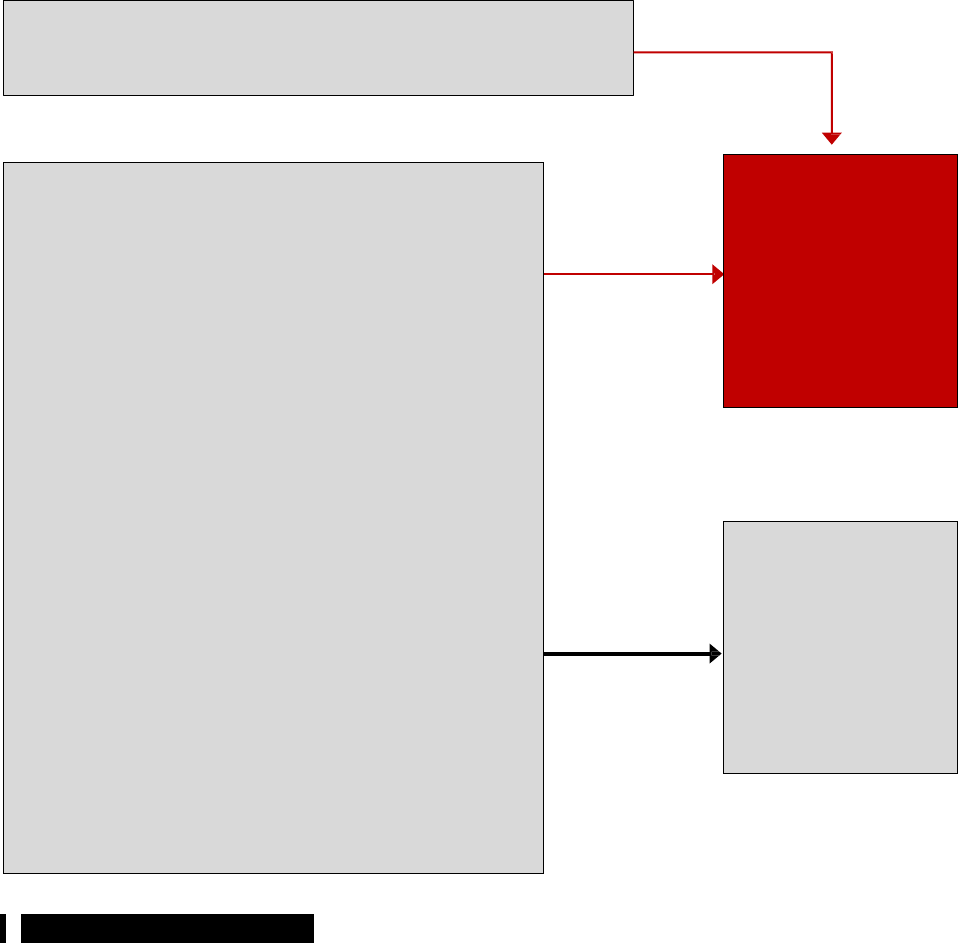
72
Version 22.0 Effective 02-25-2022
Suspected Spinal Injuries
Applies to adult and pediatric patients
Key Points/Considerations
•
Spinal movement can be minimized by application of a properly fitting rigid cervical collar and
securing the patient to the EMS stretcher
•
The head of the stretcher should not be elevated by more than 30 degrees
•
When spinal motion restriction has been initiated and a higher level of care arrives, patients
may be
reassessed for spinal injury (per this protocol)
•
When possible, the highest level of care on scene will determine if spinal motion restriction is to
be used or discontinued (collar removed, etc.)
•
A long spine board is one of multiple modalities that can be used to minimize spinal movement.
Electing not to use a long spine board will not constitute a deviation from the standard of care.
•
Long spine boards do not have a role in transporting patients between facilities
Does the patient meet Adult/Pediatric Major Trauma
Criteria
YES
NO
Spine injury
should be
suspected and
the patient should
be placed in a
properly fitted
cervical collar and
spinal movement
minimized
If the patient does not meet Major Trauma Criteria
for Blunt Mechanism and/or does for Penetrating
Mechanism, does the patient have any of the
following:
• Altered mental status – associated with
trauma for any reason including possible
intoxication from alcohol or drugs
(GCS<15)
• Complaint of neck and/or spine
pain or tenderness
• Weakness, tingling or numbness of the
trunk or extremities at any time since the
injury
• Deformity of the spine not present prior to
the incident
• Painful distracting injury or circumstances
(i.e. anything producing an unreliable
physical exam)
• High risk mechanism of injury associated
with unstable spinal injuries that include,
but are not limited to:
• Axial load (i.e. diving injury,
spearing tackle)
• High speed motorized vehicle crashes
Patients without
any of the above
findings may be
transported
without the use
of a cervical
collar or any
other means to
restrict spinal
motion
YES
NO
73
Version 22.0 Effective 02-25-2022
Resources

74
Version 22.0 Effective 02-25-2022
Advance Directives/DNR/MOLST
Applies to adult and pediatric patients
CRITERIA
The following procedure is to be used in determining course of action for all patients
• For conscious and alert patients, their wishes are to be followed in accordance with
standard consent procedures
• For patients unable to consent, including the unconscious, determine the presence of
valid MOLST, eMOLST or DNR forms at the scene:
• Signed “Medical Orders for Life Sustaining Treatment” (MOLST) form
• Electronically signed eMOLST form
• Signed New York State approved document, bracelet, or necklace
• Properly documented nursing home or nonhospital DNR form
• If MOLST, eMOLST, or DNR (document, bracelet, or necklace) is not present – begin
standard treatment, per protocol
• If MOLST, eMOLST, or DNR (document, bracelet, or necklace) is present, and is valid
for the patient’s clinical state (e.g. cardiac arrest), follow the orders as written,
inclusive of either terminating or not beginning resuscitation
• If advanced directives not mentioned above are present (living will or health care
proxy), contact medical control for direction
CFR AND EMT STOP
MEDICAL CONTROL CONSIDERATIONS
• Direction regarding wishes expressed via other forms of advanced directives including
living wills, health care proxies, and in-hospital do not resuscitate orders
KEY POINTS/CONSIDERATIONS
• Any appropriate directive indicated on the MOLST or eMOLST should be honored,
including the directive for the patient not to be transported to the facility
• A MOLST is still valid even if the physician signature has expired
• A copy of the original MOLST is a valid document
• The eMOLST form may be printed and affixed with electronic signatures.
Electronic signatures on the eMOLST form are considered valid signatures
• A copy of the DNR, MOLST, or eMOLST form should be attached to the PCR and
retained by the agency whenever possible
• Reference DOH Policy Statement 08-07 or its updated replacement, if superseded
• If a patient with a DNR (stand-alone DNR form, or as directed by a MOLST or eMOLST
form) is a resident of a nursing home (or a patient of an interfacility transport) and
expires during transport, contact the receiving staff to determine if they are willing
EMT
CFR AND ALL PROVIDER LEVELS
75
Version 22.0 Effective 02-25-2022
to accept the patient to that facility. If not, return the patient to the sending facility.
A copy of the DNR, MOLST, or eMOLST must be attached to the PCR and
retained by the agency for all transports from a sending facility to a nursing home.

76
Version 22.0 Effective 02-25-2022
APGAR
0
1
2
Activity
limp
flexion
active
Pulse
0
<100
>100
Grimace (during suctioning)
none
grimace
pulling away
Appearance
blue-gray
gray hands/feet
normal
Respirations
0
weak cry
vigorous cry

77
Version 22.0 Effective 02-25-2022
Automatic Transport Ventilator
This is a general resource document on the use of automatic transport ventilators,
not a protocol. It is intended only for those who are separately equipped and trained.
This does not supersede device-specific practice guidelines provided through agency
education.
GENERAL PARAMETERS
FiO
2
: Maintain SaO2 >=94%
PEEP: 5 cm H
2O (increase up to 10 cm H2O as needed to improve oxygenation).
Mode: A/C or SIMV
Pressure Support: 5 – 10 cmH
2
O, if in SIMV (if available)
Volume Control: Tidal volume (Vt) 6 – 8 mL/kg ideal body weight (maintain plateau
pressure [Pplat]< 30 cm H2O or PIP < 35 cm H2O)
Rate: Child: 16 – 20 breaths/min; Adult: 12 – 14 breaths/min
I-Time: Child:0.7 – 0.8 seconds; Adult:0.8 – 1.2 seconds
Please refer to the manufacturer’s ventilator operation manual for specific directions
on how to operate your ventilator.
RECOMMENDED MINIMUM REQUIREMENTS FOR AUTOMATED VENTILATOR
• Pressure limit / safety relief at a maximum of 40 cm H2O
• Ability to adjust volume to 4-8 mL/kg ideal body weight
• Ability to adjust rate in the minimum range of 10-30 breaths/min
• Ability to add PEEP or PEEP valve in the minimum range of 5 - 10 cm H
2O
• Ability for patient triggered breaths (complete control ventilation is prohibited)
INITIATING MECHANICAL VOLUME VENTILATION
• Use EtCO2 detection and pulse oximetry to evaluate the effectiveness of the
ventilation technique and to verify artificial airway patency and position
• Prepare the BVM device for emergent use in case of a ventilator failure
• Assure a secondary oxygen source with a minimum of 1000psi in a D tank
• Attach a ventilator to appropriate oxygen/air source
• Attach a disposable ventilator circuit to ventilator
• Attach a gas outlet, pressure transducer, and exhalation valve tubes to corresponding
connectors
• Select the appropriate mode, if applicable
• Select the appropriate respiratory rate (RR). Titrate to appropriate EtCO
2
• Adult: 12 – 14 breaths/min
• Child: 16 – 20 breaths/min
• Select the appropriate tidal volume (Vt) of 6 – 8 mL/kg ideal body weight
• Select the appropriate inspiratory time (It), if applicable
•
Select the desired FiO
2
if applicable. An FiO
2
of 1.0 (100% O
2
) is a standard start and
then should be titrated down to maintain SpO
2 ≥ 94%
• Verify a high pressure alarm no higher than 40 cm H
2O

78
Version 22.0 Effective 02-25-2022
• Set PEEP to 5 cm H2O
• Observe the delivery of several breaths
• Evaluate the patient for adequate chest rise, ETCO
2 and SpO2
• Adjust the ventilator settings, as necessary, to improve clinical parameters
• Record all set parameters on the patient transport record
• Monitor and record PIP, if applicable
KEY POINTS
• If at any time the ventilator should fail, or an alarm is received that cannot be
corrected, the patient should be immediately ventilated with a BVM device attached to
a 100% oxygen source

79
Version 22.0 Effective 02-25-2022
Child Abuse Reporting
CRITERIA
• Emergency Medical Technicians (all levels) are required to report cases of suspected
child abuse they come across while performing their jobs
• Document observations, thoroughly and objectively on the patient care report (PCR)
• Notify the emergency department staff of concerns and your intent to report
• An immediate oral report shall be made to:
• NYS Child Abuse and Maltreatment Register: 1-800-635-1522
• This is a hotline number for mandated reporters only, not the public
• All oral reports must be followed up with a written report within 48 hours, using form
DSS-2221-A, “Report of Suspected Child Abuse or Maltreatment,” and sent to the
appropriate agency
KEY POINTS/CONSIDERATIONS
• Notifying facility staff of concern for child abuse or maltreatment is not sufficient to
meet the obligation of reporting. All of these steps are required:
• PCR completion
• Notification of emergency department staff
• Oral report to NYS Child Abuse and Maltreatment Register
• Written report submitted within 48 hours
• If multiple EMTs are on scene from the same agency, it is only necessary for one EMT
(the EMT of record and in charge of patient care) to complete the reporting process
• If EMTs from multiple agencies are involved in the response, treatment, and transport
of the same patient, the EMT of record from each agency must complete the reporting
process
• EMTs are not expected to complete form DSS-2221-A in its entirety, although they
should fill out as much as possible, in accordance with available information
• Mandated reporters who file a report of suspected child abuse or maltreatment in good
faith are immune from liability for reporting such a case (§ 419 of the Social Services
Law)

80
Version 22.0 Effective 02-25-2022
Glasgow Coma Score (GCS)
Adult GCS (Score 3-15)
Best Eye Response
Best Verbal Response
Best Motor Response
Spontaneous (+4)
Oriented (+5)
Obeys commands (+6)
To verbal command (+3)
Confused (+4)
Localized pain (+5)
To pain (+2)
Inappropriate words (+3)
Withdrawal from pain (+4)
No eye opening (+1)
Incomprehensible sounds (+2)
Flexion to pain (+3)
No verbal response (+1)
Extension to pain (+2)
No response (+1)
Pediatric <~2 y/o GCS (Score 3-15)
Best Eye Response
Best Verbal Response
Best Motor Response
Spontaneous (+4)
Coos, babbles (+5)
Moves spontaneously /
purposefully (+6)
To verbal stimuli (+3)
Irritable cries (+4)
Withdraws to touch (+5)
To pain (+2)
Cries in response to pain (+3)
Withdraws to pain (+4)
No response (+1)
Moans in response to pain (+2)
Flexor posturing to pain (+3)
No response (+1)
Extensor posturing to pain (+2)
No response (+1)
81
Version 22.0 Effective 02-25-2022
Incident Command
The Governor’s Executive Order No. 26 of March 5, 1996, establishes the National Incident
Management System (NIMS) as the standard system of command and control for
emergency operations in New York State. The Incident Command System (ICS) does not
define who is in charge, but rather defines an operational framework to manage many types
of emergency situations.
One essential component of ICS is Unified Command. Unified Command is used to manage
situations involving multiple jurisdictions, multiple agencies, or multiple situations. The
specific issues of direction, provision of patient care, and the associated communication
among responders must be integrated into each single or unified command structure and
assigned to the appropriately trained personnel to carry out.

82
Version 22.0 Effective 02-25-2022
Needlestick/Infectious Exposure
CRITERIA
• This resource outlines the immediate actions to be taken following any percutaneous,
non-intact skin, or mucous membrane contact with blood or body secretions
CLEANSING FOR A PUNCTURE WOUND
• Immediately cleanse with Betadine or chlorhexidine
• Follow-up by soaking the site for five minutes in a solution of Betadine and sterile
water
CLEANSING FOR SKIN CONTACT
• Wash the area with soap and water then clean the area with Betadine or chlorhexidine
CLEANSING FOR MUCOUS MEMBRANES
• If in the mouth, rinse mouth out with a large volume of tap water
• If in the eyes, flush with water from an eyewash station. If an eyewash station is not
available, use tap water
KEY POINTS/CONSIDERATIONS
• Thoroughly cleanse the area of exposure
• Decontamination may be limited because of the lack of available resources
• Report the exposure to a supervisor, immediately
• Seek immediate medical attention and post-exposure evaluation at the facility the
source patient was transported to, if possible

83
Version 22.0 Effective 02-25-2022
Normal Vital Signs for Infants/Children
Age
Respirations
Pulse
Systolic
BP
Newborn (<28 days)
30 – 60
100 – 180
>60
Infant (< 1 year)
30 – 60
100 – 160
>60
Toddler (1 – 3 years)
24 – 40
90 – 150
>70
Preschooler (3 – 5 yrs)
22 – 34
80 – 140
>75
School-aged (6 – 8 yrs)
18 – 30
70 – 120
>80
From: American Academy of Pediatrics, Pediatric Education for Prehospital Professionals

84
Version 22.0 Effective 02-25-2022
Oxygen Administration
Applies to adult and pediatric patients
CFR AND ALL PROVIDER LEVELS
• Ongoing assessment of the effectiveness of breathing
• Refer to the “Extremis: Respiratory Arrest/Failure” or “Extremis: Respiratory
Arrest/Failure – Pediatric” protocol, if necessary
• Oxygen therapy via non-rebreather mask (NRB) 10-15 LPM, or nasal cannula (NC) 2-
6 LPM, to maintain oxygen saturation if saturation is < 94% or to effectively manage
other signs of dyspnea
• Some children with cardiac conditions may have baseline oxygen saturations
between 65 and 85% rather than above 94% (ask care provider about
patient’s usual oxygen saturation level)
• Infant oxygen administration, if needed, should be provided at 0.5-2 LPM via
appropriately sized nasal cannula
• Any patient with suspected carbon monoxide poisoning should receive high flow
oxygen via non-rebreather mask (NRB), see also “Carbon Monoxide Exposure –
Suspected” protocol
• Oxygen therapy using bag-valve mask (BVM) 15-25 LPM
• Appropriate BLS airway adjuncts
• BVM-assisted ventilation
CFR STOP
EMT
• Oxygen powered nebulizer devices for use in accordance with manufacturer
specifications (typically ~6-8 LPM)
• Continuous positive airway pressure (CPAP) 5-10 cm H2O*
• For the adult patient
• For older pediatric patients consider CPAP for EMT, as equipment size allows
if available and trained
• Portable automated transport ventilators (ATV)*
• See “Resource: Automatic Transport Ventilator”
EMT STOP
KEY POINTS/CONSIDERATIONS
• *If equipped and trained
• Blow-by oxygen administration may be required in some cases
• Oxygen should be titrated to maintain saturation at or just above 94% and/or to treat
signs of dyspnea. If there is a situation in which the patient may be unstable and
hypoxia might be missed (such as major trauma), it is acceptable to place the patient
on high flow oxygen
•
•
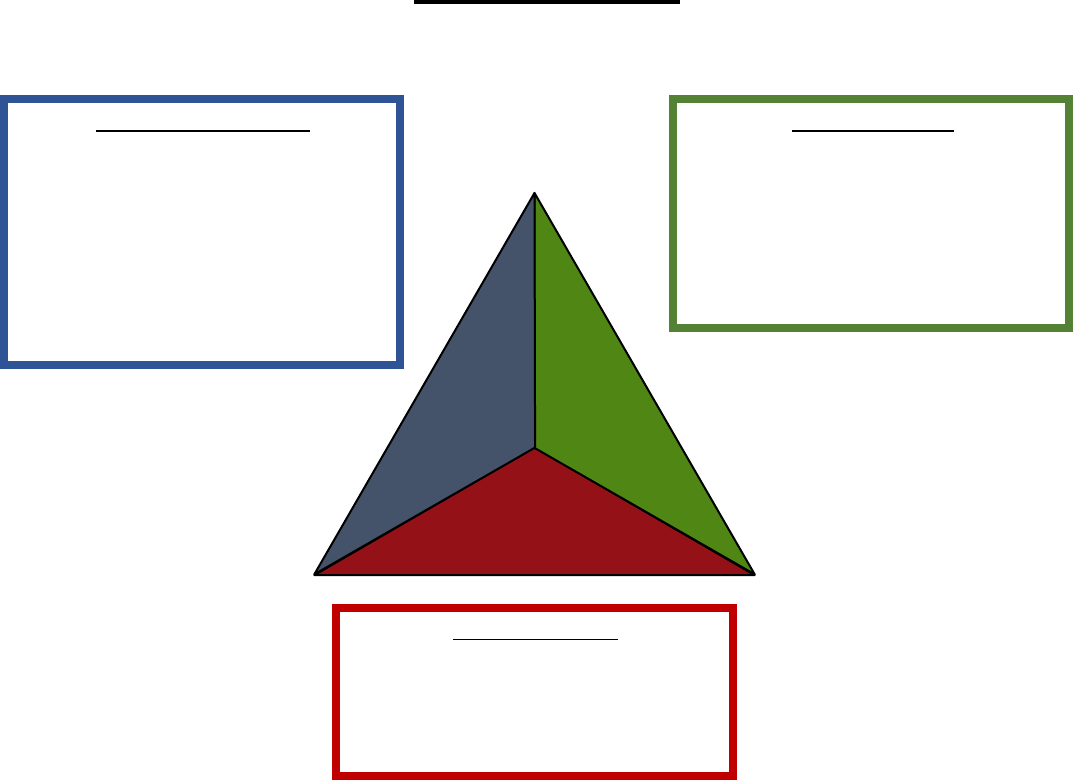
85
Version 22.0 Effective 02-25-2022
A
(Open/Clear – Muscle Tone/Body
Position)
Airway and Appearance
ABNORMAL
Abnormal
or absent cry or speech
Decreased
response to parents
or environmental
stimuli
Floppy
or rigid muscle tone or not moving
Normal
Normal
cry or speech
Responds
to parents or to environmental stimuli
such as
lights, keys, or toys
Good muscle tone and moves extremities well
B
(Visible Movement / Respiratory Effort)
Work of Breathing
ABNORMAL
Increased/excessive (nasal flaring, retractions or
abdominal muscle use) or decreased/absent
respiratory
effort or noisy breathing
Normal
Breathing appears
regular without excessive
respiratory
muscle effort or audible respiratory
sounds
A
B
C
Pediatric Assessment Triangle
General Impression
(First view of patient)
C
Circulation to Skin
(Color / Obvious Bleeding)
ABNORMAL
Cyanosis,
mottling, paleness/pallor or
obvious
significant
bleeding
Normal
Color appears normal. No significant bleeding

86
Version 22.0 Effective 02-25-2022
Prescribed Medication Assistance
Applies to adult and pediatric patients
CRITERIA
• This protocol is intended to provide assistance to patients or caregivers of patients
who require help with emergency medication that they, or people in their care, are
prescribed
• Sublingual nitroglycerin for patients with chest pain
• Inhalers (albuterol* or other beta-agonists) for patients with asthma or COPD
• Rectal diazepam (Diastat) for children or adults with seizures or special needs
• Epinephrine autoinjectors for treatment of anaphylaxis
• Naloxone (Narcan
®
) via autoinjector or intranasal device
CFR AND EMT STOP
MEDICAL CONTROL CONSIDERATIONS
• Approval of assisted medication administration within the scope of practice for
administration route of an CFR or EMT as needed
KEY POINTS/CONSIDERATIONS
• This protocol is designed to assure that the EMS provider and medical control provider
are best prepared to assist patients with ongoing disease processes that are not
covered by these protocols, and who have already been given therapy by their
prescribers.
• *Common brand names for albuterol include Ventolin
®
, Proventil
®
, and ProAir
®
• Levalbuterol (Xopenex) is a beta agonist and, therefore, a levalbuterol inhaler
may be utilized in this protocol
• A combination inhaler that contains albuterol and ipratropium (Atrovent
®
), such
as Combivent
®
, that is prescribed to the patient may be substituted for an
albuterol inhaler in this protocol
•
EMT
CFR AND ALL PROVIDER LEVELS

87
Version 22.0 Effective 02-25-2022
Refusal of Medical Attention
Applies to adult and pediatric patients
CRITERIA
• To be utilized when a person with an actual or potential injury or other medical
problem is encountered by EMS personnel and wishes to refuse indicated care or
transport
• In the absence of a demonstrated and documented impairment, adults and parents of
children have a right to refuse treatment for themselves and their minor children
• Providers have the responsibility to provide informed consent for the refusal
• Agency and regional policies and procedures may augment these minimum protocols
• Medical control should be contacted for transport refusals of patients with an Apparent
Life-Threatening Event (ALTE) / Brief Resolved Unexplained Events (BRUE) – see
protocol
• Patients with the following should be considered “high risk” – consider medical control
• Age greater than 65 years or less than 2 months
• Pulse >120 or <50
• Systolic blood pressure >200 or <90
• Respirations >29 or <10
• Serious chief complaint (including, but not limited to, chest pain, shortness of
breath, syncope, and focal neurologic deficit)
• Significant mechanism of injury or high index of suspicion
• Fever in a newborn or infant under 8 weeks old
CFR AND ALL PROVIDER LEVELS
• May cancel an ambulance only when there is no indication of a potential illness or
injury
• A CFR may not initiate a refusal of care when there is a person who appears to have
an injury or illness
CFR STOP
EMT
Patients who have the medical decision-making capacity (ability to understand the nature
and consequences of their medical care decision) and wish to refuse care/transport may
do so after the provider has:
• Determined the patient exhibits the ability to understand the nature and consequences
of refusing care/transport (See below)
• Offered transport to a facility
• Explained the risks of refusing care/transport
• Explained that by refusing care/transport, the possibility of serious illness, permanent
disability, and death may increase
• Advised the patient to seek medical attention and gave instructions for follow-up care
• Confirmed that the patient understood these directions
• Left the patient in the care of a responsible adult (when possible)

88
Version 22.0 Effective 02-25-2022
• Advised the patient to call again with any return of symptoms or if he or she wishes to
be transported
EMT STOP
MEDICAL CONTROL CONSIDERATIONS
• Assistance with high risk, difficult, or unclear situations
KEY POINTS/CONSIDERATIONS
The evaluation of any patient refusing medical treatment or transport should include the
following:
• Visual assessment – To include responsiveness, level of consciousness,
orientation, obvious injuries, respiratory status, and gait
• Initial assessment – Airway, breathing, circulation, and disability
• Vital signs – (If patient allows) pulse, blood pressure, and respiratory rate and
effort; pulse oximetry and/or blood glucose, when clinically indicated
• Focused exam – As dictated by the patient’s complaint (if any)
Medical decision-making capacity determination – As defined below
• Patients at the scene of an emergency who demonstrate the ability to understand the
nature and consequences of their medical care decisions shall be allowed to make
decisions regarding their medical care, including refusal of evaluation, treatment, or
transport
• A patient, who is evaluated and found to have any one of the following conditions shall
be considered incapable of making medical decisions regarding care and/or transport
and should be transported to the closest appropriate medical facility under implied
consent:
• Altered mental status from any cause
• Age less than 18 unless an emancipated minor or with legal guardian consent
• Attempted suicide, danger to self or other, or verbalizing suicidal intent
• Acting in an irrational manner, to the extent that a reasonable person would
believe that the capacity to make medical decisions is impaired
• Unable to verbalize (or otherwise adequately demonstrate) an understanding
of the illness and/or risks of refusing care
• Unable to verbalize (or otherwise adequately demonstrate) rational reasons for
refusing care despite the risks
• No legal guardian available (in person or by telephone) to determine transport
decisions
• P
atient consent in these circumstances is implied, meaning that a reasonable and
medically capable adult would allow appropriate medical treatment and transport
under similar conditions
• Law enforcement should be considered, if needed, to facilitate safe management of
patients who lack capacity and require involuntary transport
• Capacity is a clinical decision, therefore, it is not necessary for law
enforcement to place a patient in their “protective custody” in order to safely
manage those whom lack capacity and require transportation for further
evaluation and treatment
89
Version 22.0 Effective 02-25-2022
Responsibilities of Patient Care
The provision of patient care is a responsibility given to certified individuals who have
completed a medical training and evaluation program specified by the NYS Public Health or
Education Laws and subject to regional and State regulations or policy. Prehospital
providers are required to practice to the standards of the certifying agency (DOH) and the
medical protocols authorized by the local REMAC.
Patient care takes place in many settings, some of which are hazardous or dangerous. The
equipment and techniques used in these situations are the responsibility of locally
designated, specially trained, and qualified personnel. Emergency incident scenes may be
under the control of designated incident commanders who are not emergency medical care
providers. These individuals are generally responsible for scene administration, safe entry
to a scene, or decontamination of patients or responders.
Pursuant to the provisions of Public Health Law, the individual having the highest level of
prehospital medical certification, and who is responding with authority (duty to act) is
responsible for providing and/or directing the emergency medical care and the
transportation of a patient. Such care and direction shall be in accordance with all NYS
standards of training, applicable state and regional protocols, and may be provided under
medical control.

90
Version 22.0 Effective 02-25-2022
Transfer of Patient Care
CRITERIA
• Providers are responsible for the patient while in their care. Transferring or receiving
providers will not be responsible for his or her counterpart’s actions
• Patients may be transferred to a provider with the same or higher level of certification
• Patients may be transferred to a provider with a lower level of certification provided the
patient is not anticipated to require higher-level care and the lower level provider has
formally accepted the transfer of care
When transferring patients, both the receiving and transferring providers should:
• Ensure that all patient information is transferred to the receiving provider, such as
chief complaint, past medical history, current history, vital signs, and care given prior
to the transfer of care
• Assist the receiving provider until they are ready to assume patient care
• Be willing to accompany the receiving provider to the facility if the patient’s condition
warrants or if the receiving provider requests it, as resources allow
All personnel and agencies must comply with NYSDOH BEMS policy statement 12-02 (or
updated version) regarding documentation:
• Both providers will complete a Patient Care Report (PCR), as appropriate, detailing
the care given to the patient while in their care
• The receiving provider must briefly document care given prior to receiving the patient
• Providers within the same agency may utilize the same PCR (as technology and
agency/regional/state policy allow)
MEDICAL CONTROL CONSIDERATIONS
• Resolution of any disagreements between transferring and transporting providers
KEY POINTS/CONSIDERATIONS
• Any disparity between the providers must be resolved by on-line medical control or the
provider of higher certification must transport with the patient
• In situations involving multiple patients or mass casualty incidents, EMS providers may
field-triage patients to care and transportation by EMS providers of lower level of
certification as resources allow
• A standardized process of transfer of care may be implemented by regional systems
EMT
CFR AND ALL PROVIDER LEVELS
